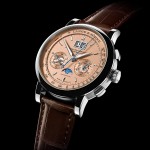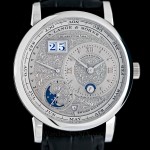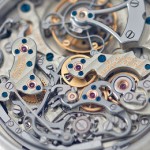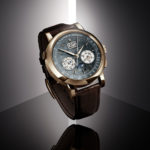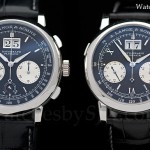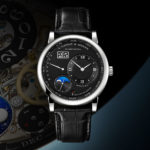In-Depth: A. Lange & Söhne Datograph Perpetual Tourbillon Honeygold “Lumen”
Impressively all-in-one.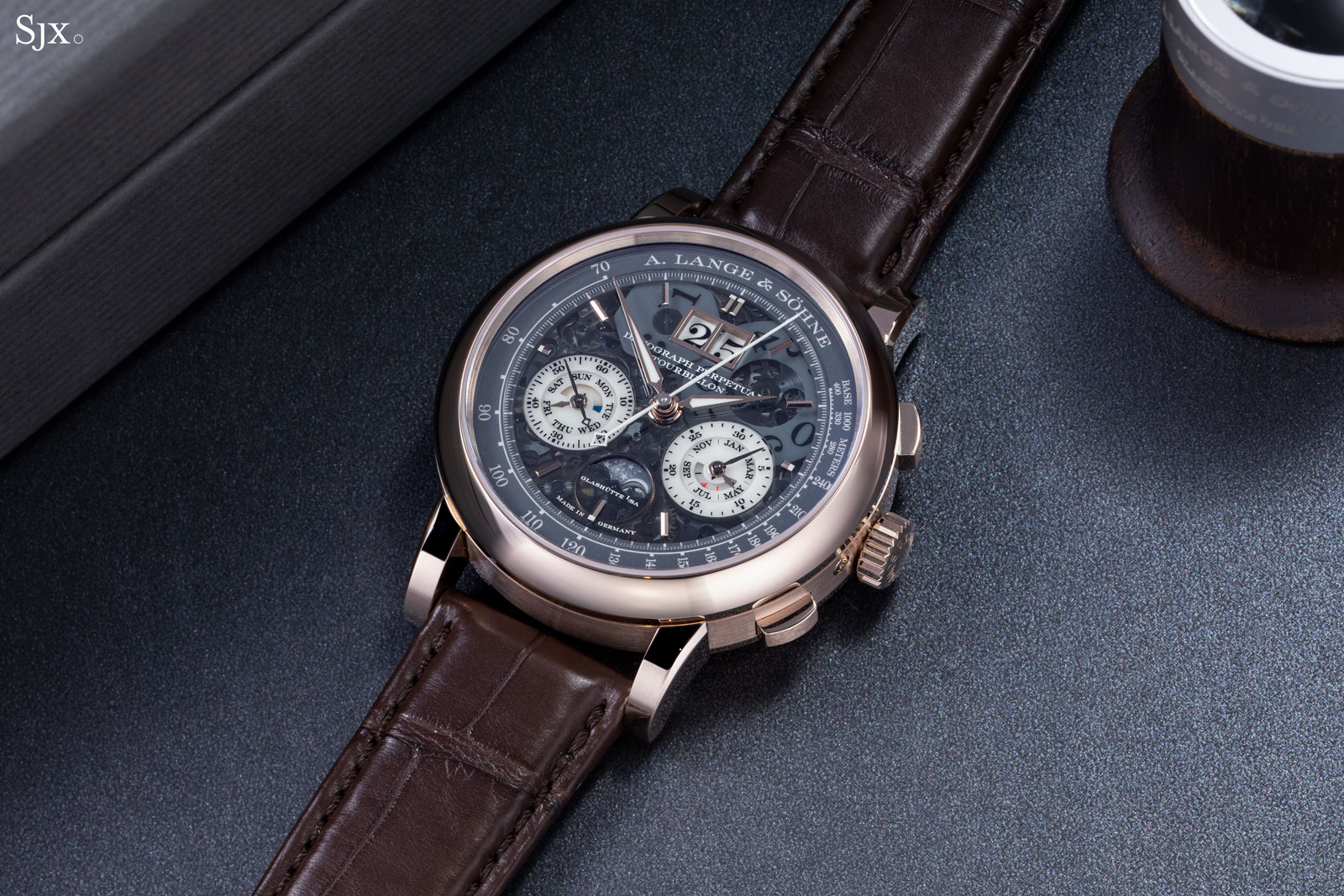
The Datograph Perpetual Tourbillon Honeygold “Lumen” is a union of almost everything that is associated with A. Lange & Söhne, from the Lumen treatment to the case metal. Appropriately enough, it was conceived to mark a milestone: the 25th anniversary of the Datograph, the brand’s trademark chronograph.
While the impressive watch has nearly all of Lange’s signature elements, is it truly great?
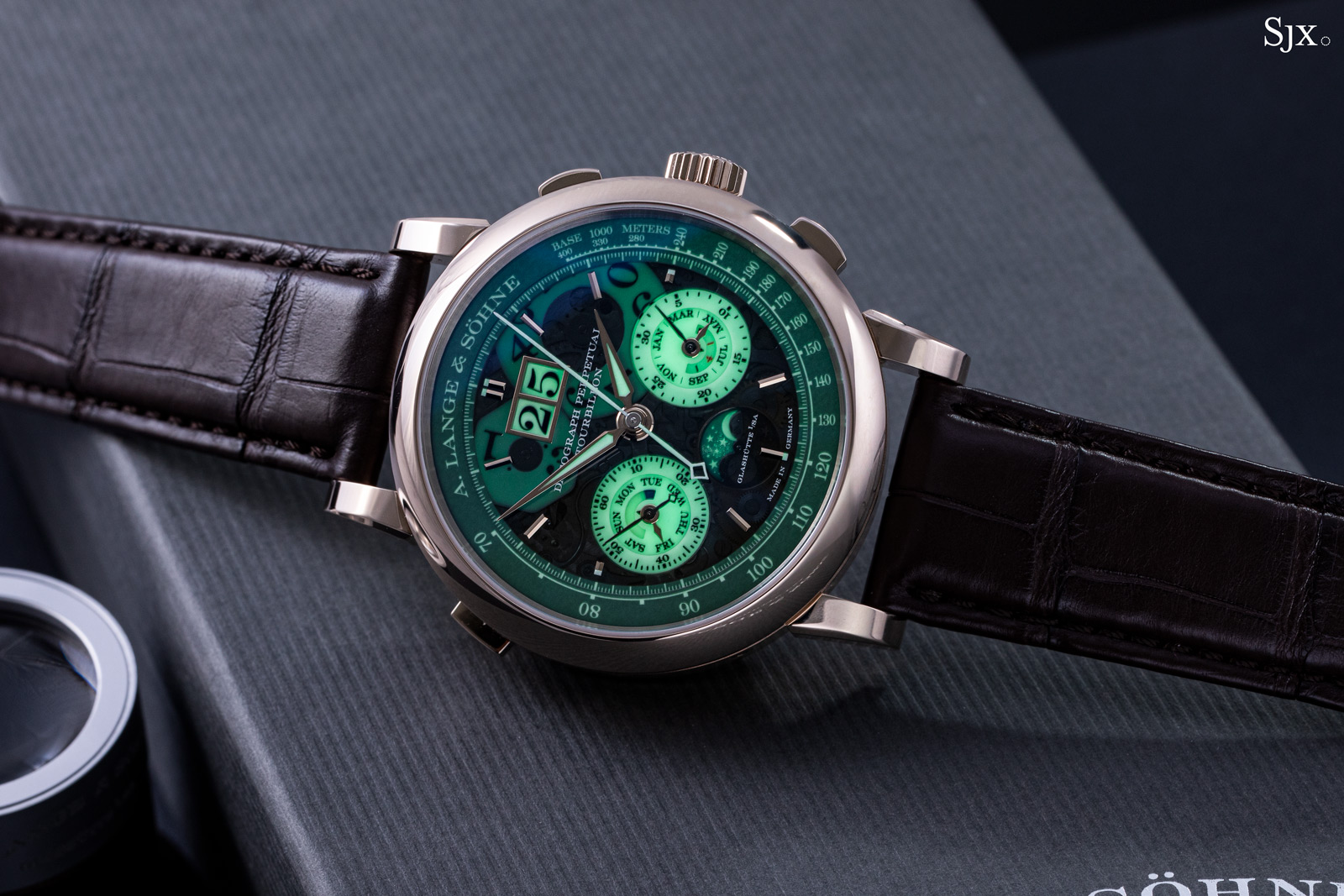
Initial thoughts
The Datograph Perpetual Tourbillon Honeygold “Lumen” is ambitious because it is an all-in-one limited edition. The watch is big, heavy, and flawlessly executed. It feels like an object of exceptional quality, and lives up to expectations under a loupe.
It captures Lange as a brand in tangible terms. The long name is descriptive and sums up the key elements of the watch, almost all of which are unique to Lange. While the earlier versions were already extremely complicated, this goes a further by incorporating uniquely Lange livery with the Lumen dial and Lange’s own Honeygold alloy. Essentially everything synonymous with Lange can be found here.
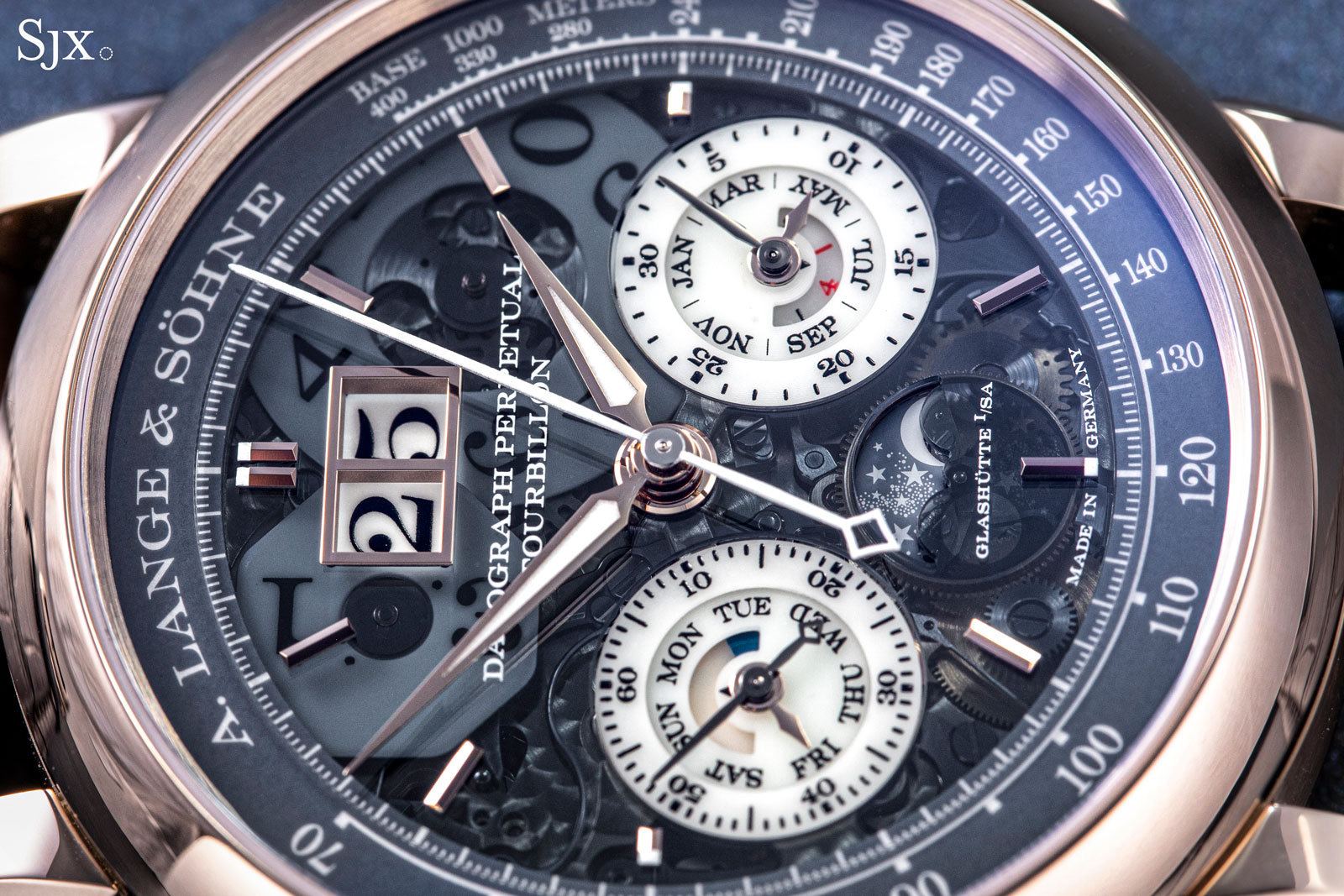
There’s the Datograph chronograph movement, outsized date, a hacking tourbillon with a cage that will be familiar to fans of German watchmaking, the tinted-and-luminous dial, and the case in Lange’s proprietary gold alloy.
The only distinctively Lange features missing are Handwerkskunst decoration and a chain and fusee, either of which would have hoisted the price past the million-dollar mark.
But the latest Lumen isn’t innovative like the Zeitwerk was, or elegantly ingenious like the Lange 1 Perpetual Calendar. It’s ambitious in a straight line, and conceived with a more-is-better approach. More is often better, and in this case that’s certainly true.
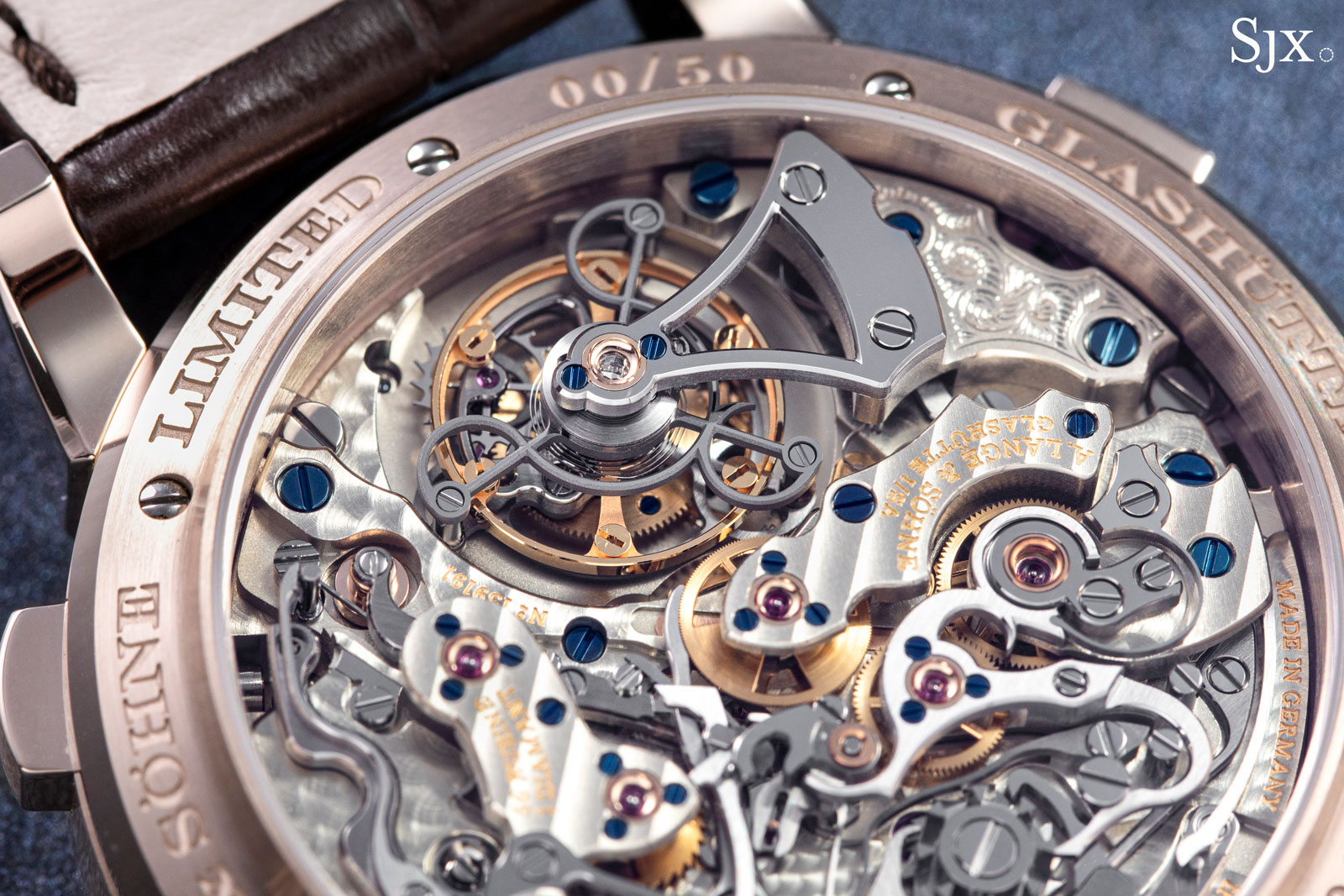
While it is clear the Datograph Perpetual Tourbillon “Lumen” does everything well – and some aspects are perfectly executed – it feels a little derivative from a conceptual perspective. The movement is near identical in terms of mechanics and decoration to that in the earlier versions, except it does away with the power reserve indicator.
Its accessible counterpart for the Datograph’s 25th anniversary isn’t especially novel either, but is compelling nonetheless because of its relatively affordable price. This, on the other hand, is the most expensive current-production Lange (leaving aside gem-set watches) at US$620,000 before taxes.
For a person of means wanting as much as possible of the brand’s DNA in a single watch, this is it (assuming he or she doesn’t need to buy other models to obtain one) . For an equally wealthy person who wants a collection of Lange, I would argue that Lange’s best-in-class offerings in specific categories, for instance the Datograph and Zeitwerk, are cumulatively more interesting.
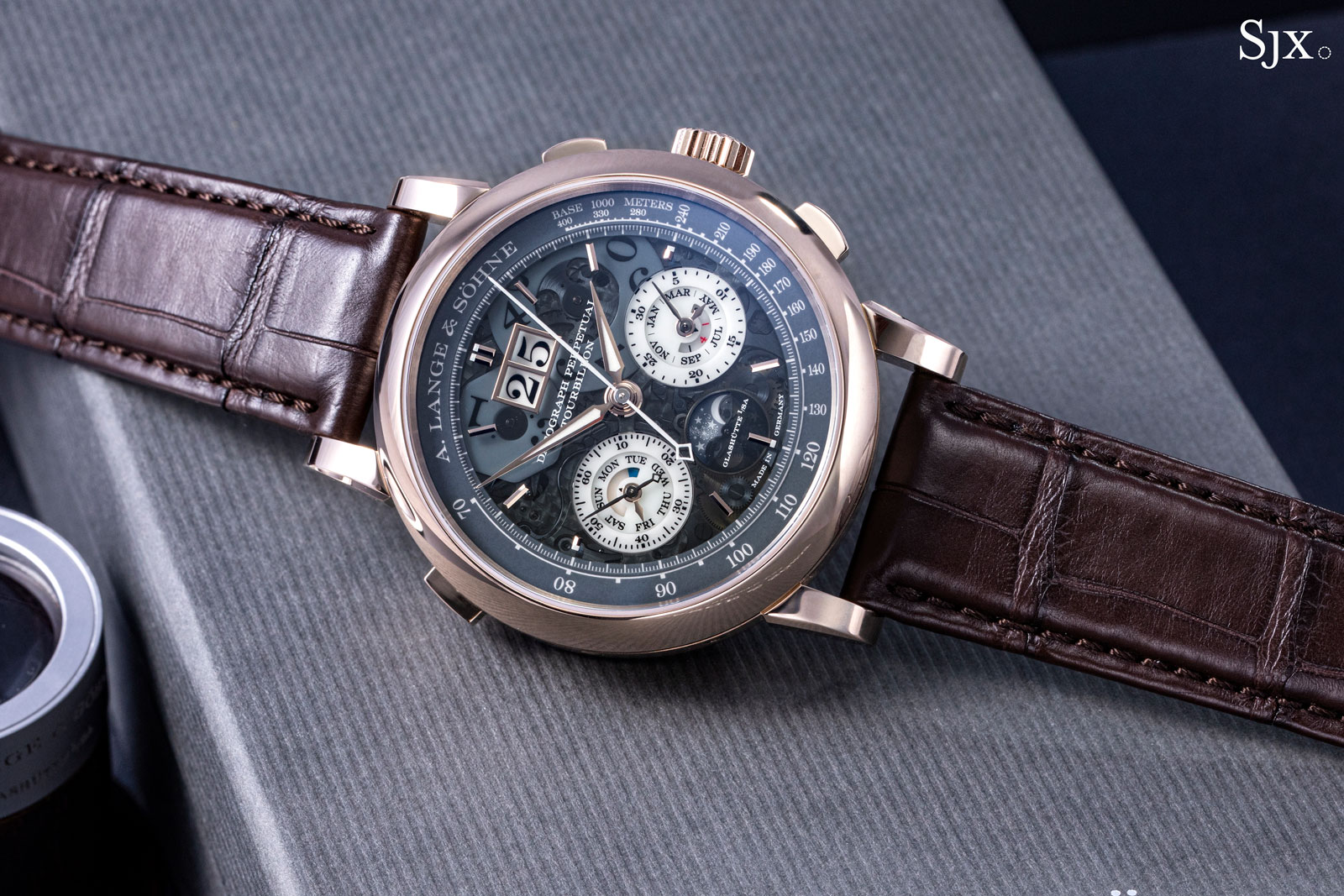
Going all in
The Lumen edition is the third iteration of the most complicated Datograph to date, after the original in platinum and the subsequent white gold model with a pink gold dial.
The Lumen edition has the same dimensions as earlier versions, so it’s 41.5 mm wide and 14.6 mm thick. The large size is typical of Lange complications, so it’s not really a shortcoming, since the size and weight are characteristics that most Lange fans accept or even prefer.
I find it feels good on the wrist, though the weight is always apparent. Like most of the brand’s bigger watches, this is delivered with a heavyweight folding clasp that helps with balance on the wrist.
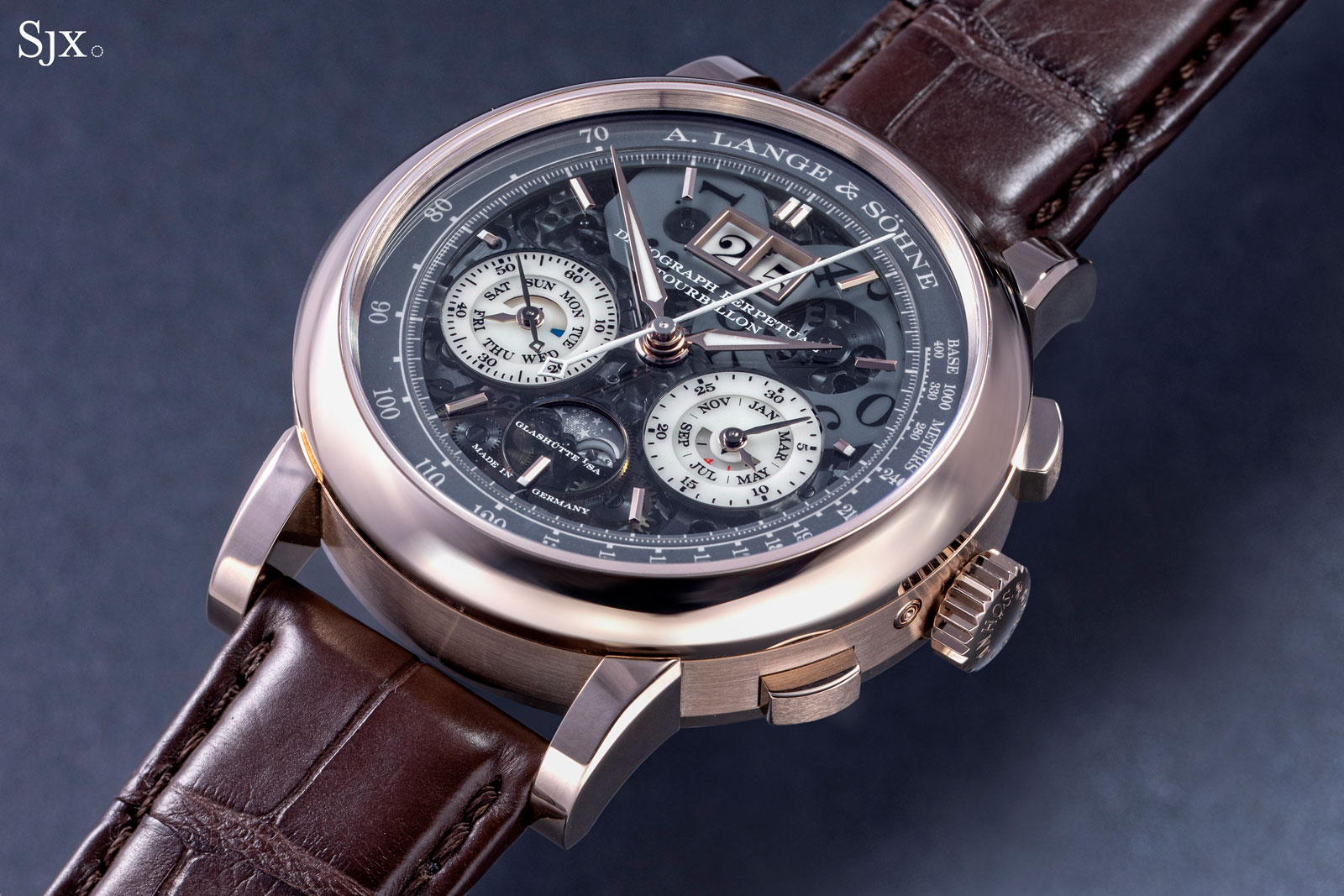
Unlike earlier versions of the model, this is presented in Honeygold, a metal Lange uses solely for limited editions. The metal is exclusive to Lange in watchmaking and has a recognisable hue that is neither yellow nor rose gold, but something in between. The last watch in Honeygold with a Lumen dial was the Zeitwerk “Lumen”, which unsurprisingly looks strikingly similar.
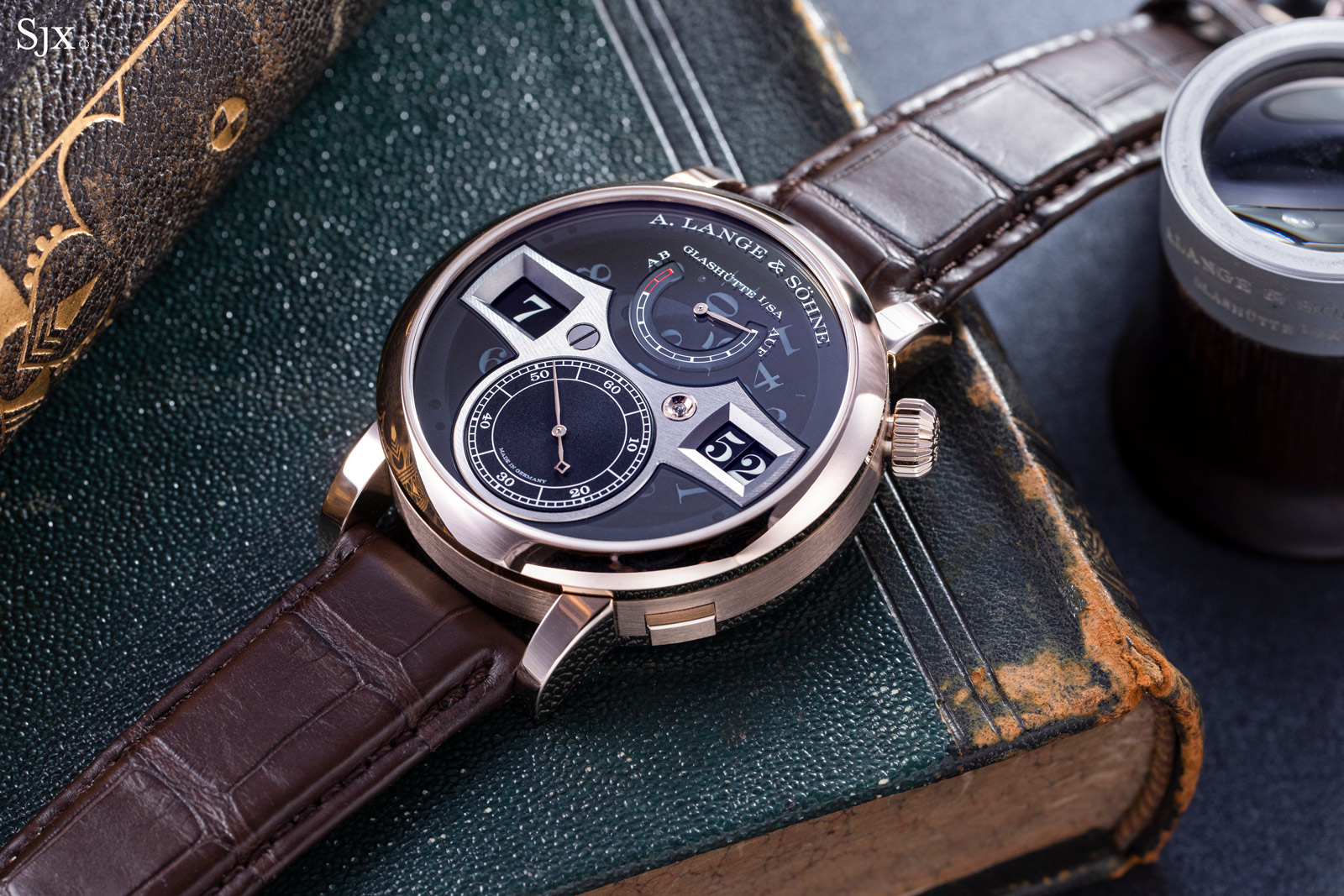
The Zeitwerk “Lumen”
The alloy is not just about aesthetics, as it also boasts about double the hardness of conventional 18k gold, which should make it more hard wearing in everyday wear. And that also makes it substantially more costly to machine and polish, explaining some of the premium for the material.
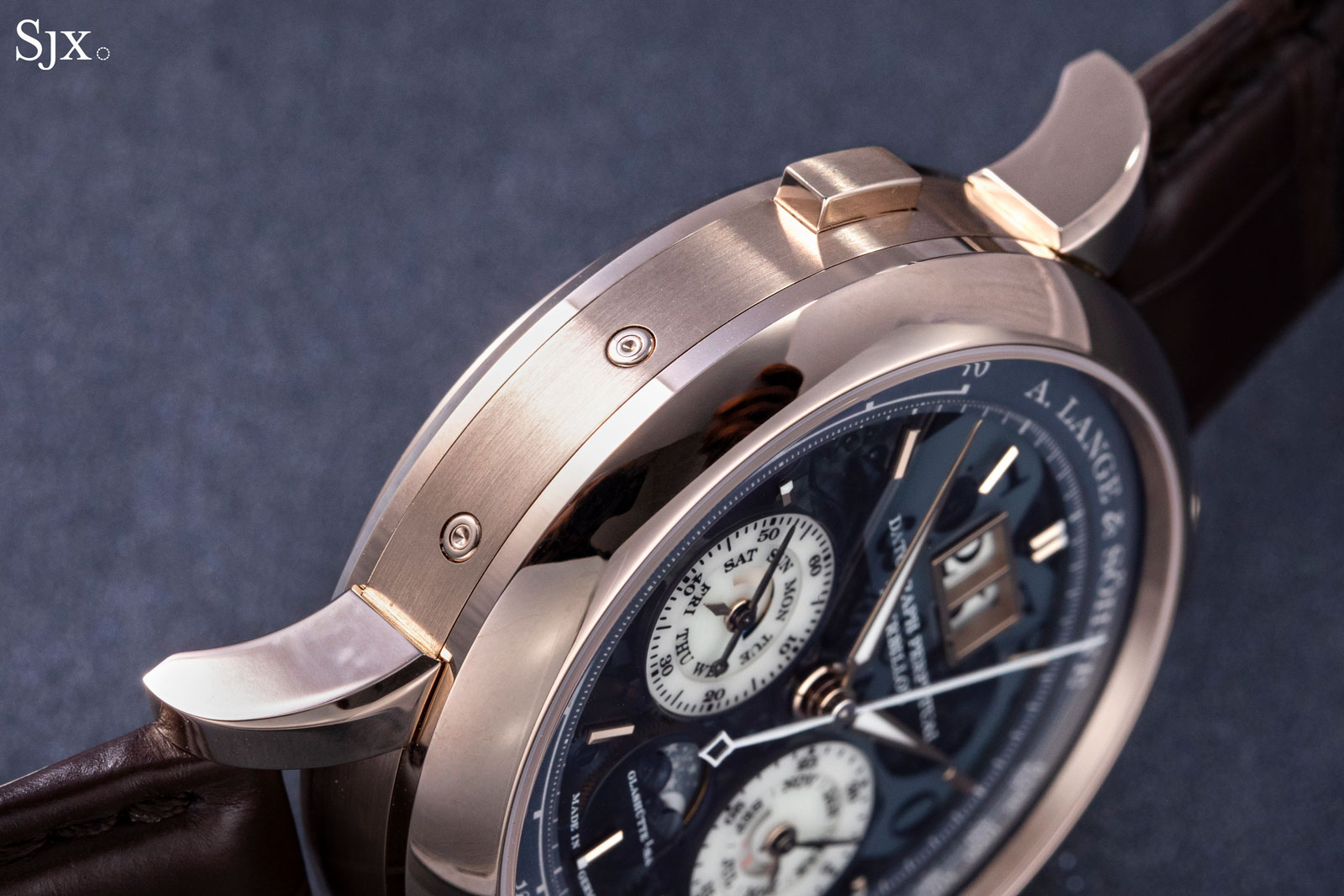
Because of the case metal, the colours that make up the Datograph Perpetual Tourbillon “Lumen” are rose and shades of grey, compared to a near monochromatic black and silver in earlier Lumen models that were uniformly cased in platinum.
As a result, this has a warmer appearance that is less stark, which is unusual for Lange, which historically has relied on a more muted palette.
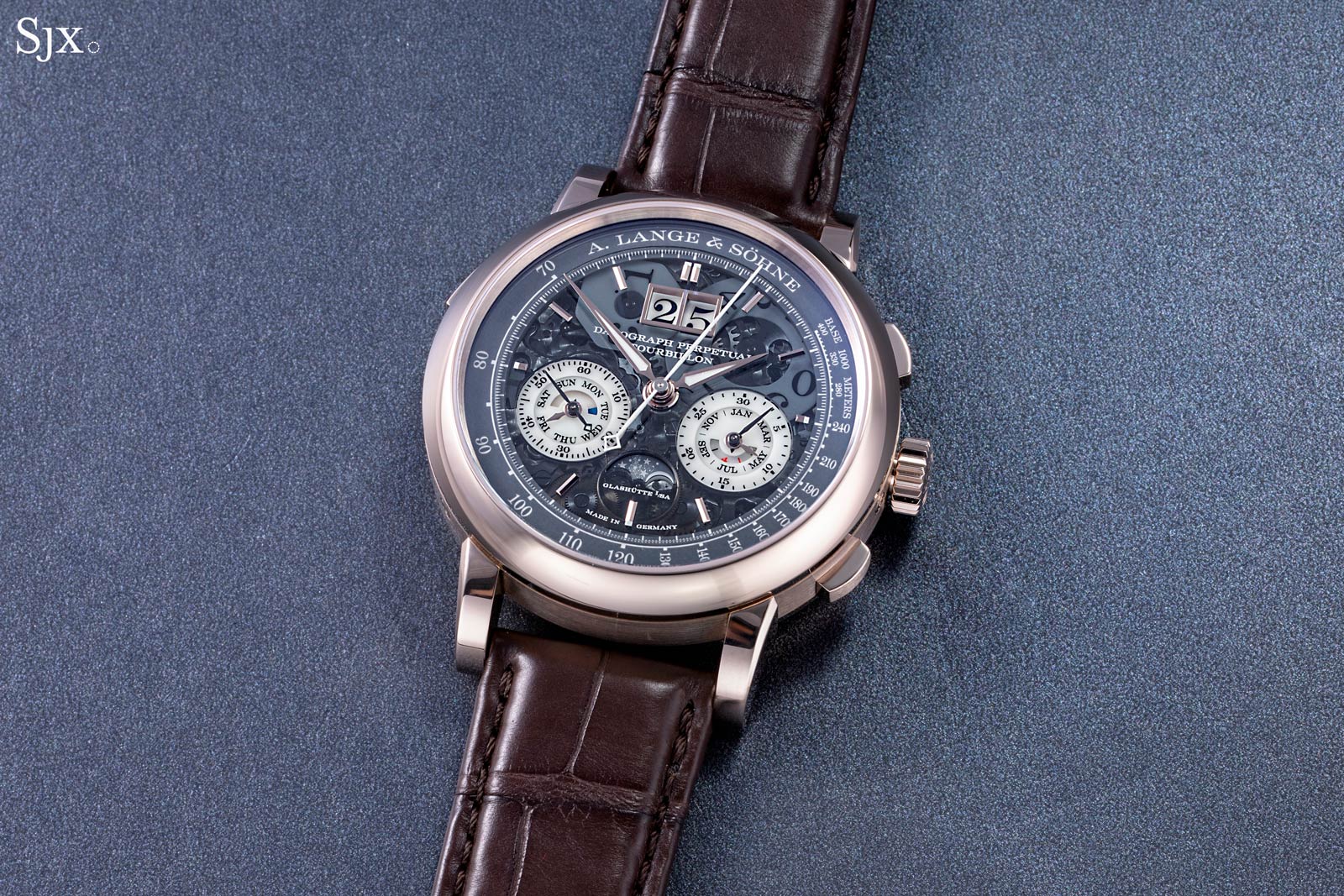
The different look and feel is easily discernible when compared with the original…

That was a stark combination of platinum with a black dial
The Lumen treatment is similar to that in the Datograph Lumen, so the twin registers and date discs glow the brightest green, while the tachymeter scale glows a dimmer green. But because this is a perpetual calendar, it has the bonus of a luminous moon phase.
Even though the Super-Luminova used here is identical to that in the Datograph Lumen, the green glow feels different, probably due to the case metal, which leads to a difference in the perceived colour.
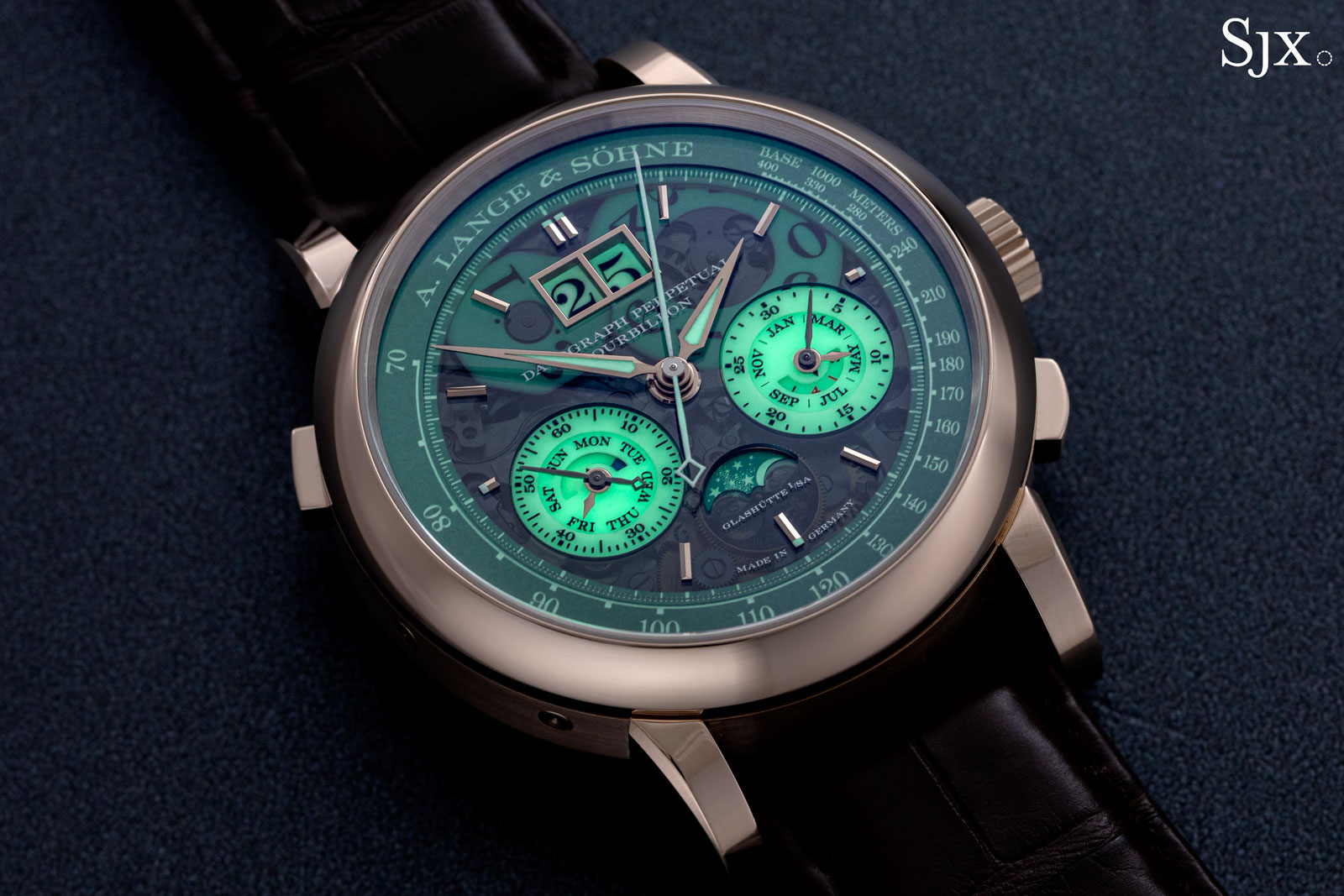
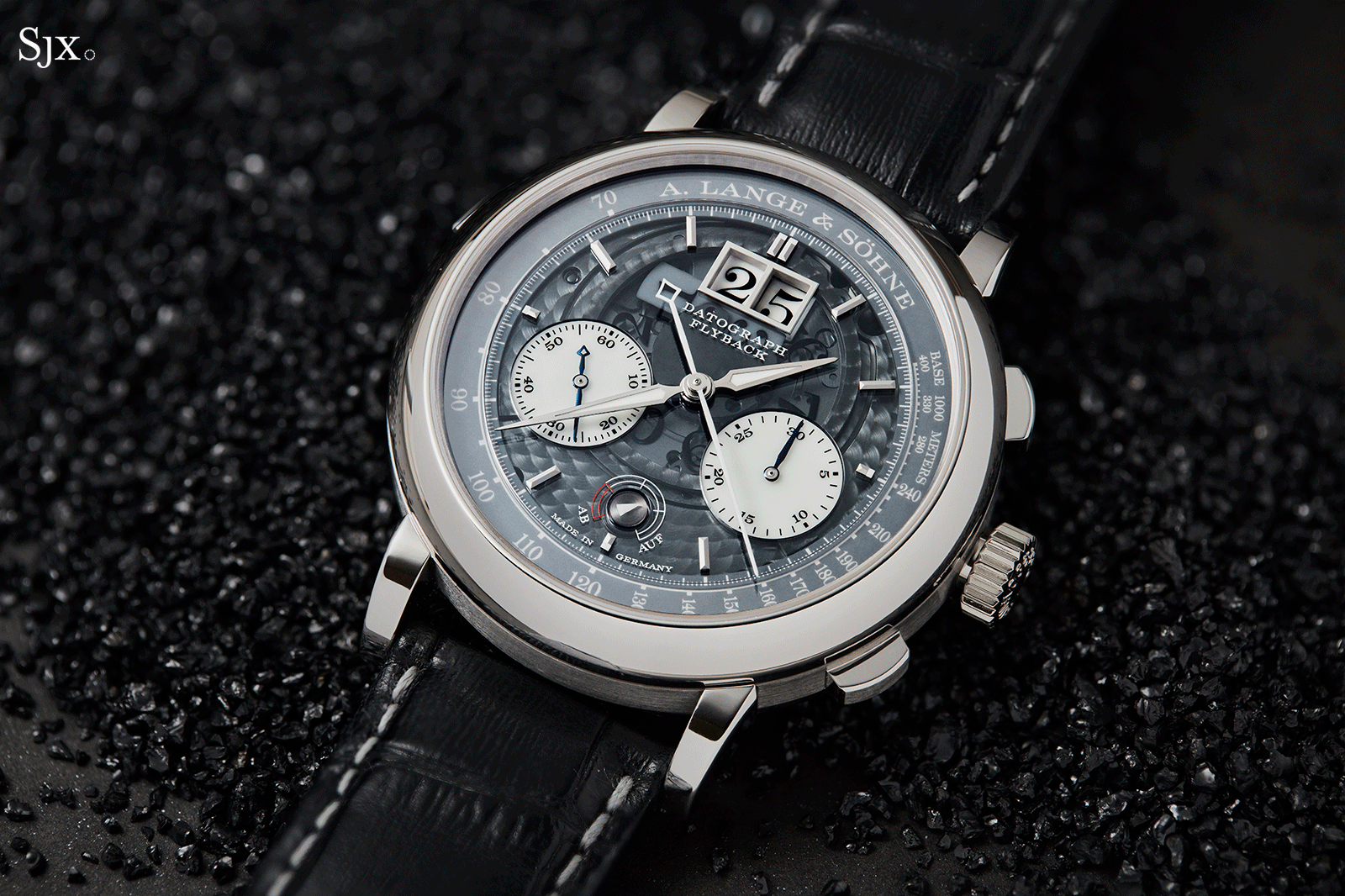
The Datograph Lumen
In the usual Lumen fashion, the dial is tinted sapphire, which offers a look at the complex calendar mechanism just below. Here the sapphire dial is more useful than in past Lumen models, simply because there is much more to see with the perpetual calendar mechanism below the dial.
Because the sapphire is tinted grey, the dial looks almost opaque at the distance and mechanics are only visible up close. This is a good thing as the dial would otherwise be too cluttered.
Because of the perpetual calendar, the dial is crowded, Lumen or not. This uses the same calendar module found in the Datograph Perpetual, so the calendar indicators are contained within the twin chronograph registers.
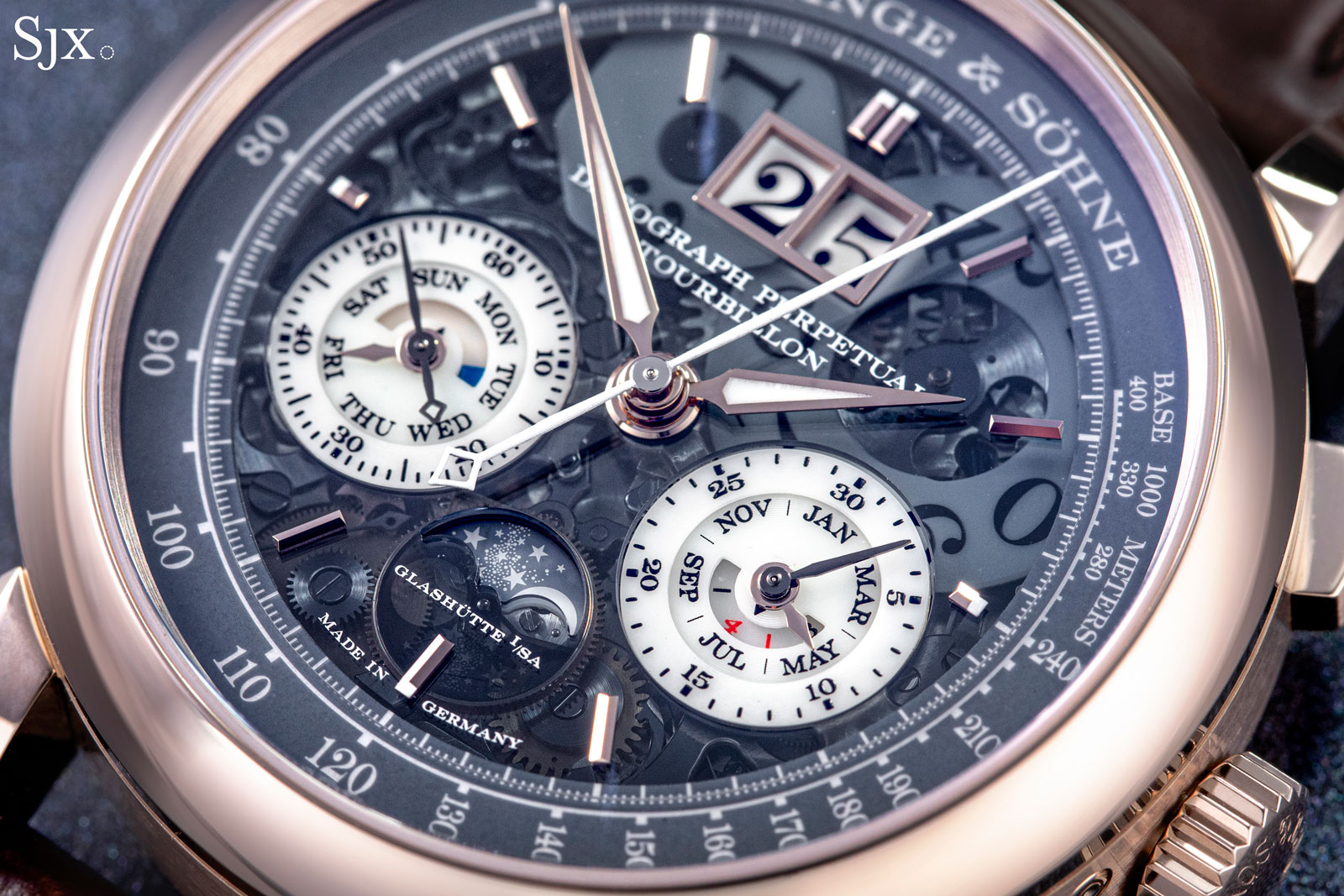
The trademark Lange outsized date is outstandingly legible, but the small, densely packed sub-dials are not easy to read at a glance. Fortunately, the least important indicators, namely for leap year and day-night, are also the most deeply recessed.
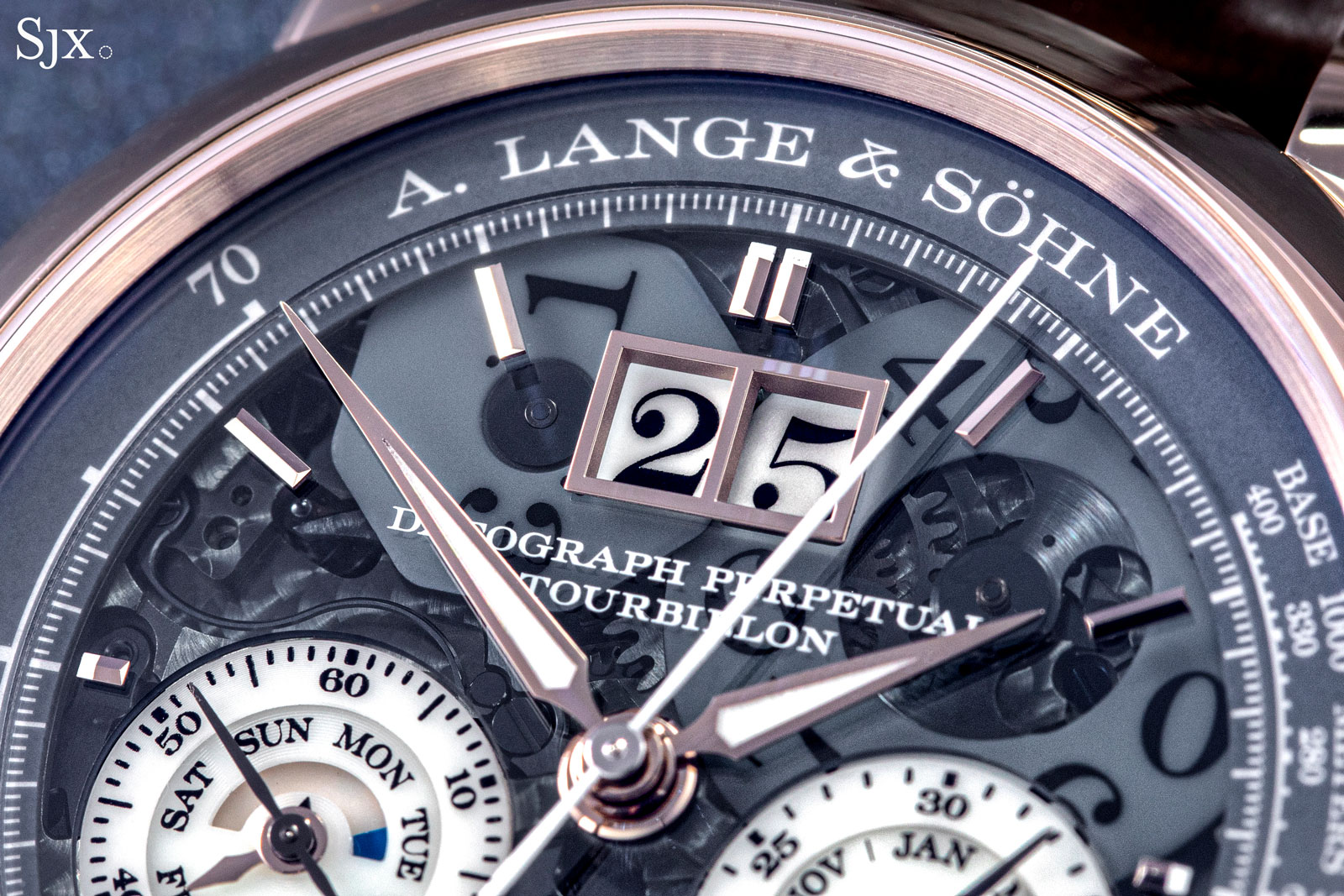
This lack of legibility is common to all perpetual calendar displayed in this manner so it’s not a criticism per se. The moon phase, however, feels disproportionately small as it has to fit between the twin registers.
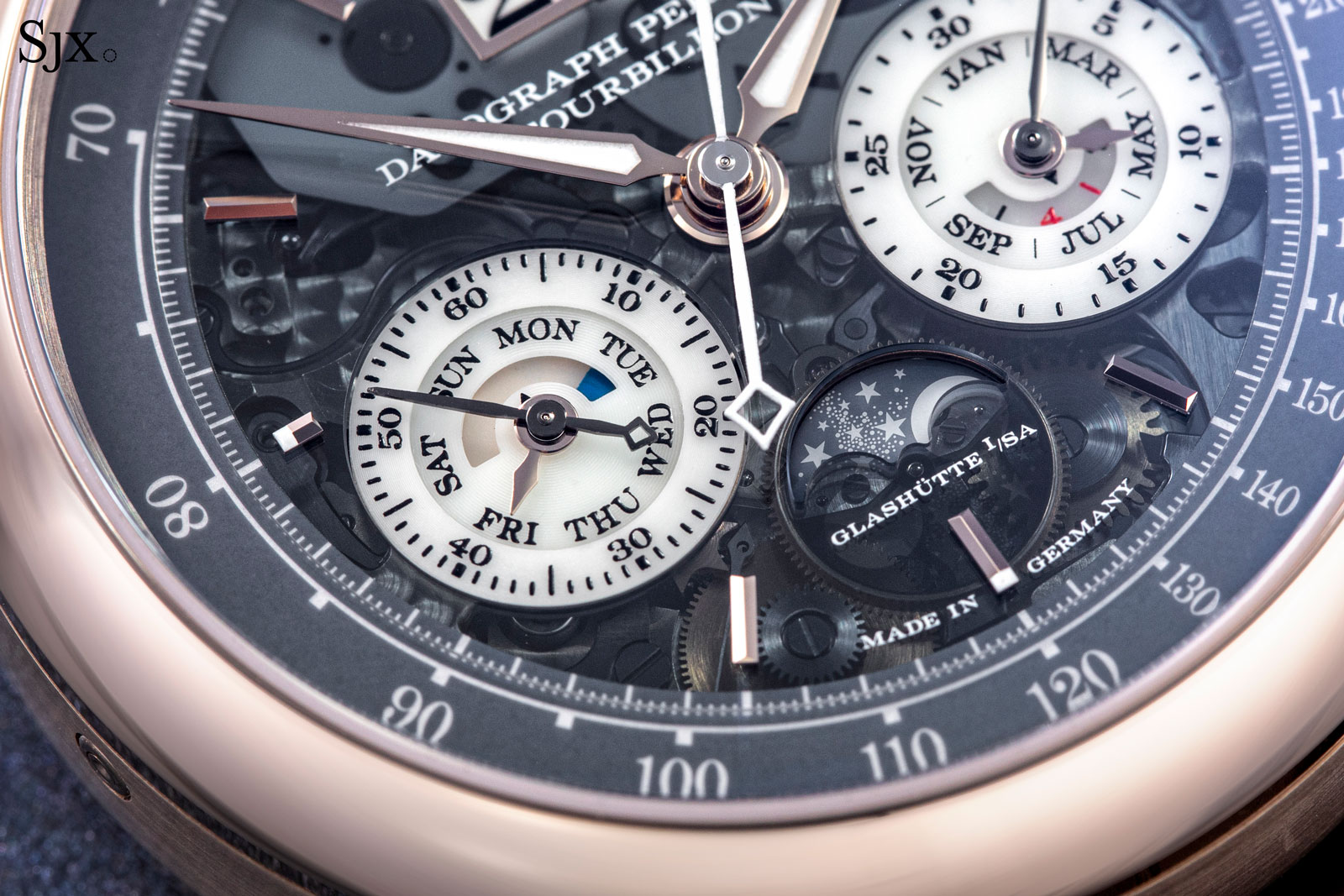
As an aside, the Lumen edition eliminates with the discreet power reserve indicator found on the earlier versions of the Datograph Perpetual Tourbillon, a necessity because of the sapphire dial and luminous chapter ring with the tachymetric scale.
While the power reserve was cleverly implemented before, it isn’t especially necessary, so not having one doesn’t detract from the watch.
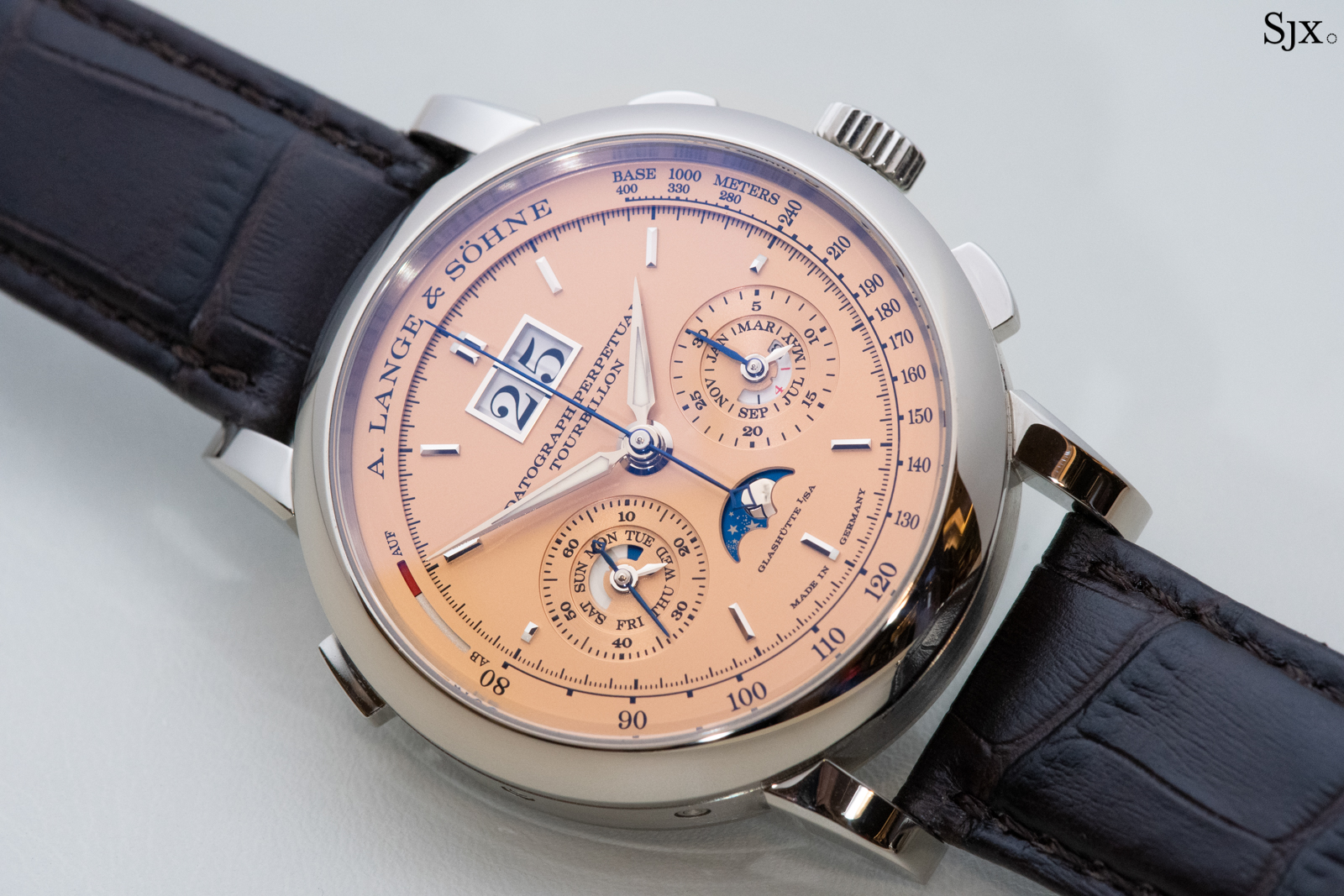
The white gold version with the power reserve between nine and ten o’clock
The mechanical difference between the versions of the movement with and without the power reserve is easily apparent when looking at the calibres under the dial.
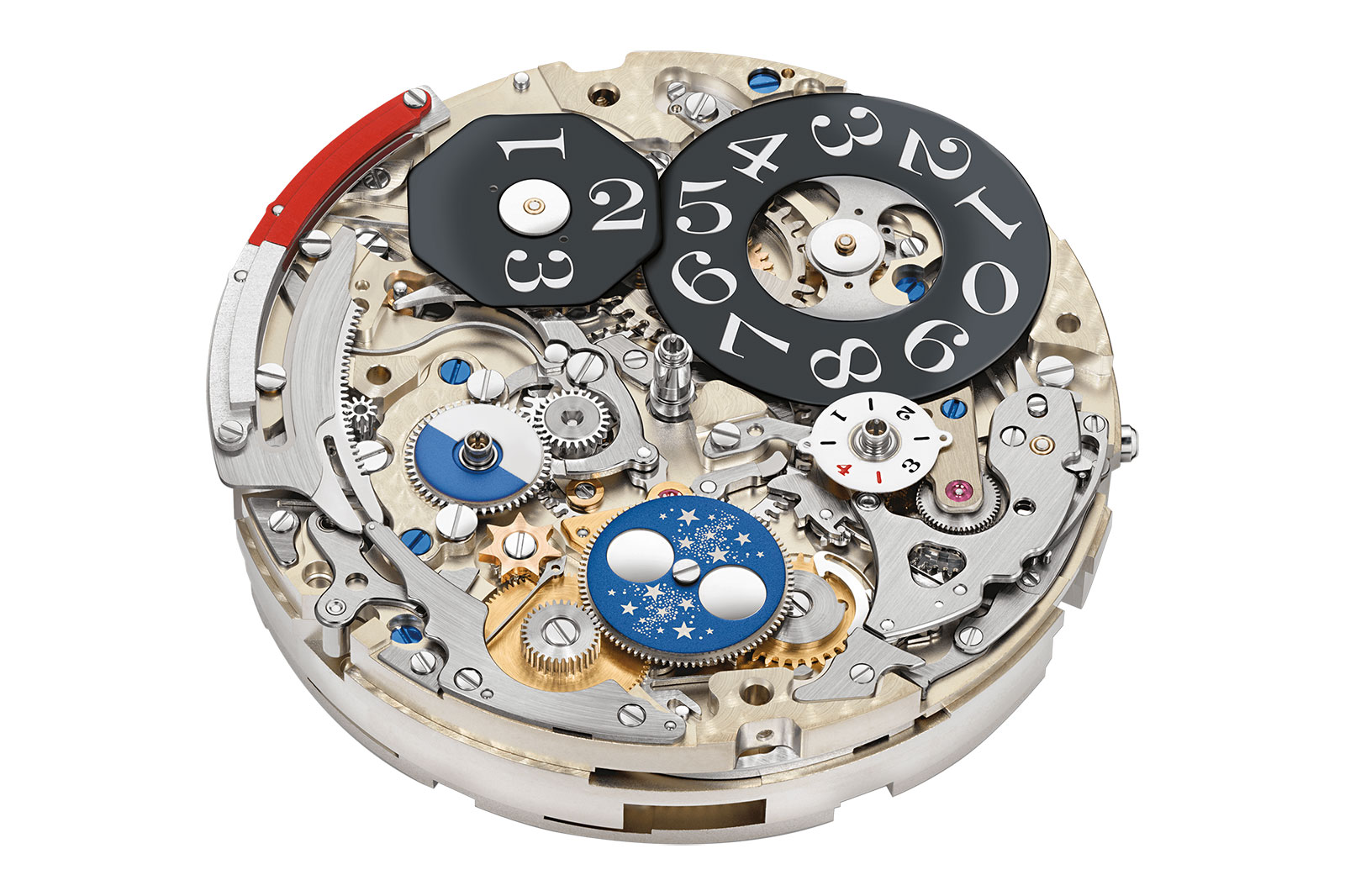
The L952.2 in earlier versions that has a power reserve on the periphery of the movement between nine and ten o’clock. Image – A. Lange & Söhne
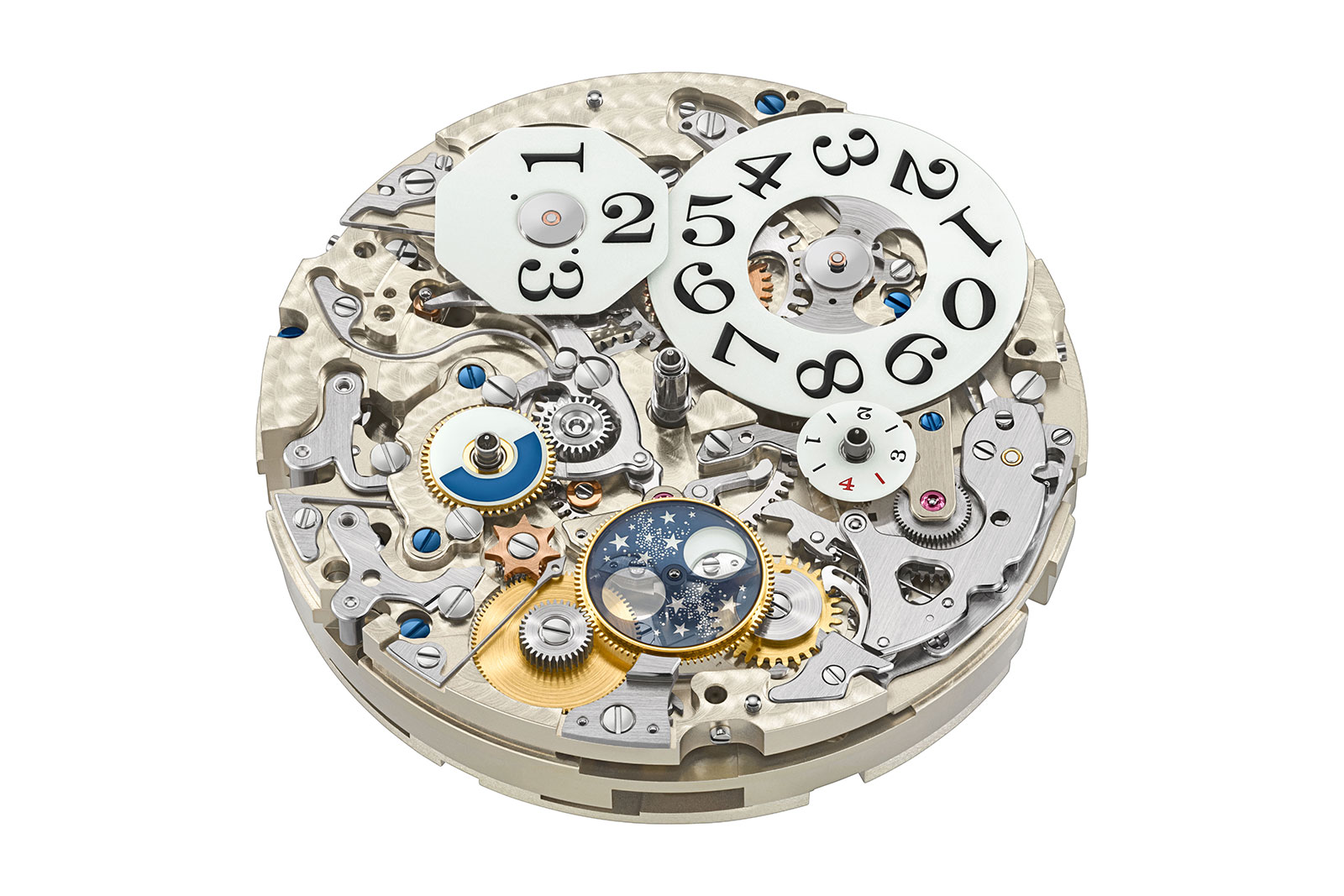
The L952.4 of the “Lumen” edition without the power reserve. Image – A. Lange & Söhne
Over on the back, the L952.4 is on show through a clear sapphire window. Derived from the L951 in the original Datograph, this gains a tourbillon and perpetual calendar mechanism, growing thicker, wider, and more complex, though the all-important chronograph works remain largely identical.
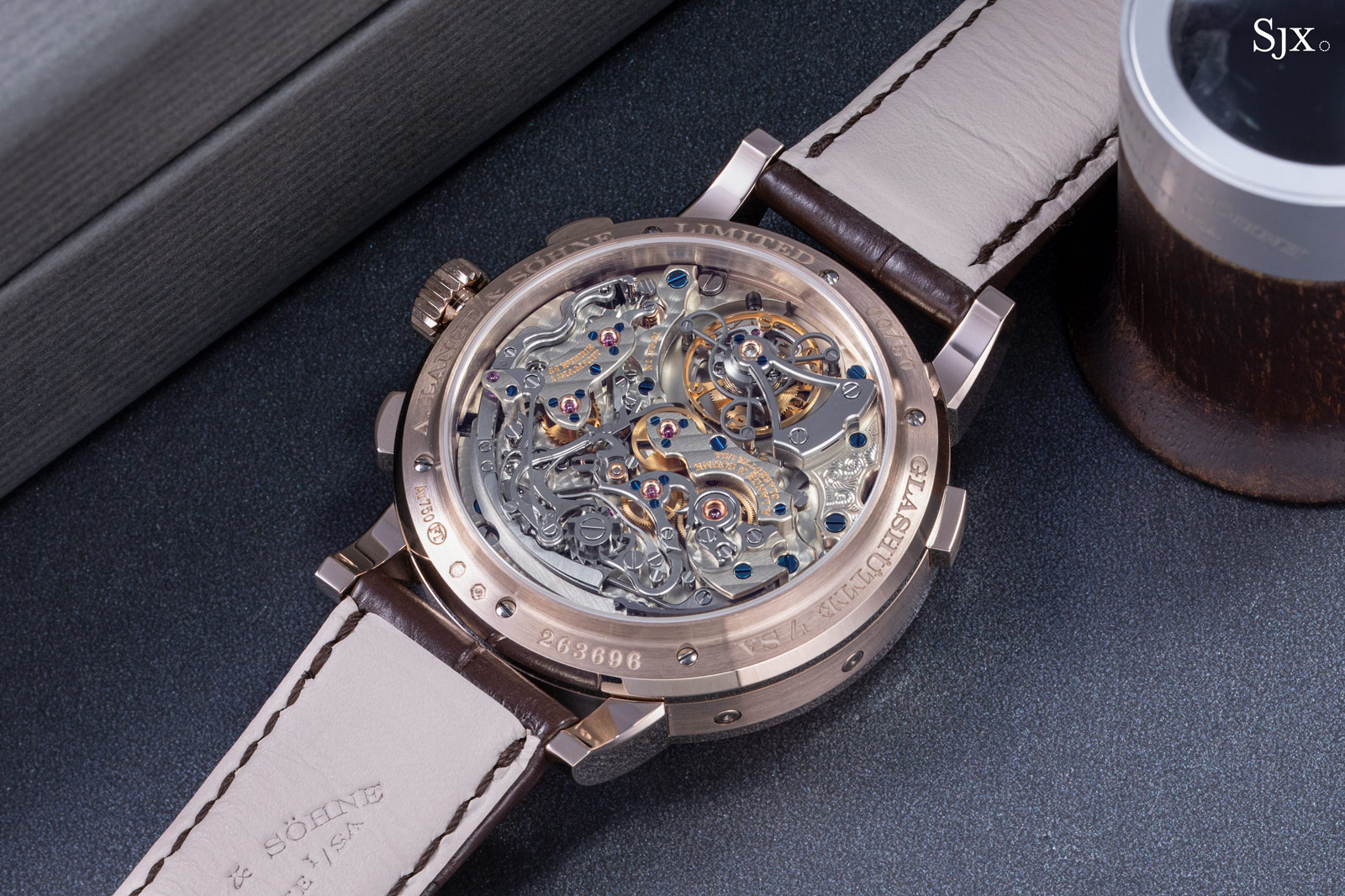
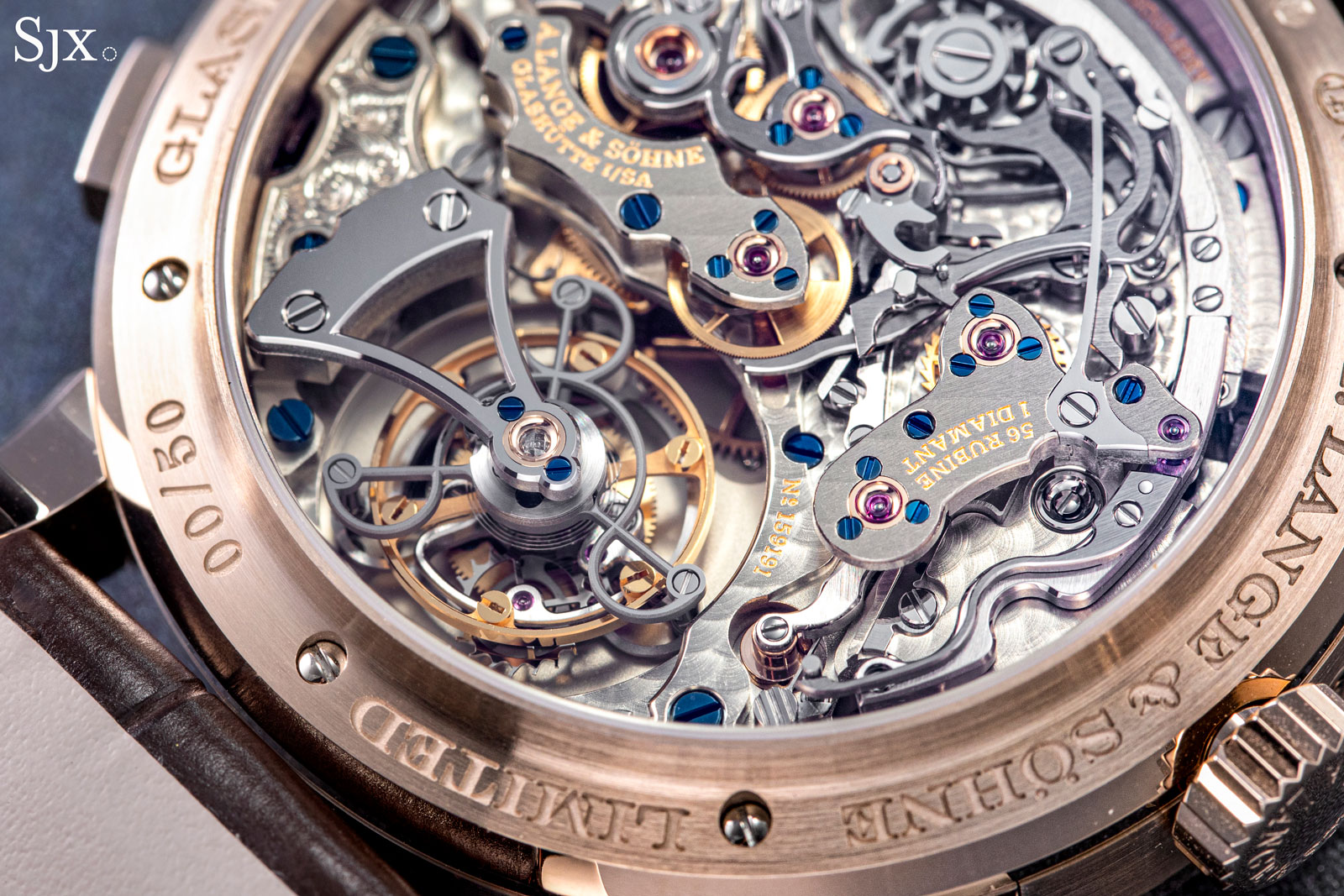
The much-loved chronograph mechanism remains marvellous even 25 years after its introduction. Though the chronograph works have been tweaked slightly, most notable with a repositioned bridge, the overall aesthetic remains equally beautiful.
The traditional layout has a lateral coupling and column wheel, and it is accented by slightly exaggerated details evoking the historical pocket watches that served as inspiration.
Besides its aesthetics, the chronograph is also notable for having an instantaneously jumping counter, which was a significant feature at its debut in 1999. In contrast to most chronographs on the market that have “dragging” counters with a minute hand that creeps forward before accelerating into a final jump, the jumping counter on the Datograph is just that – the elapsed minute pointer crisply jumps forward in a single, swift motion every 60 seconds.
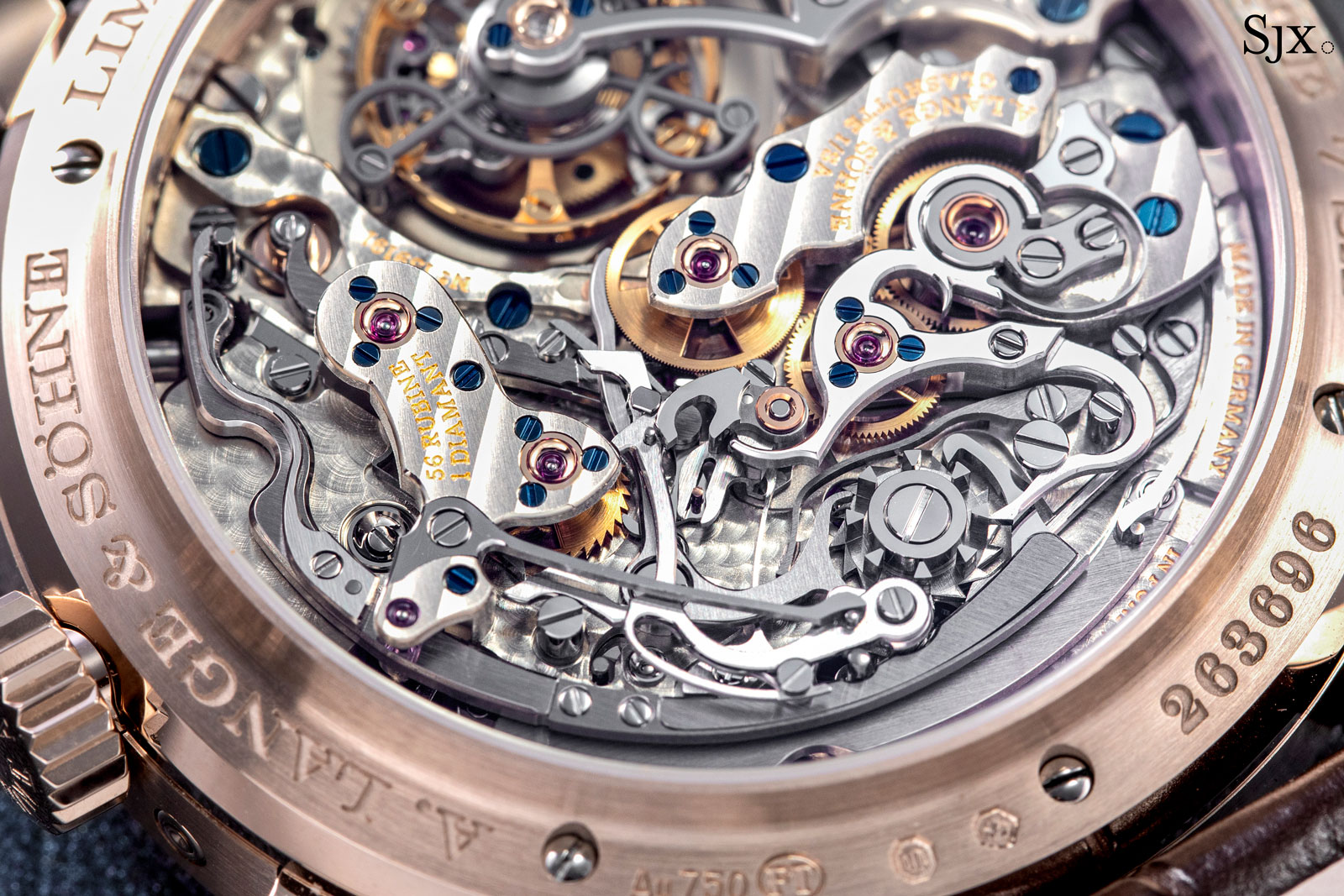
The chronograph bridge had to be relocated in order to accommodate the tourbillon. It utilises the same large, free-sprung balance as the standard Datograph movement, with an even larger tourbillon cage to enclose it. The balance runs at the same frequency as the standard Datograph, 18,000 beats per hour or 2.5 Hz, which allows the chronograph mechanism to be retained unchanged.
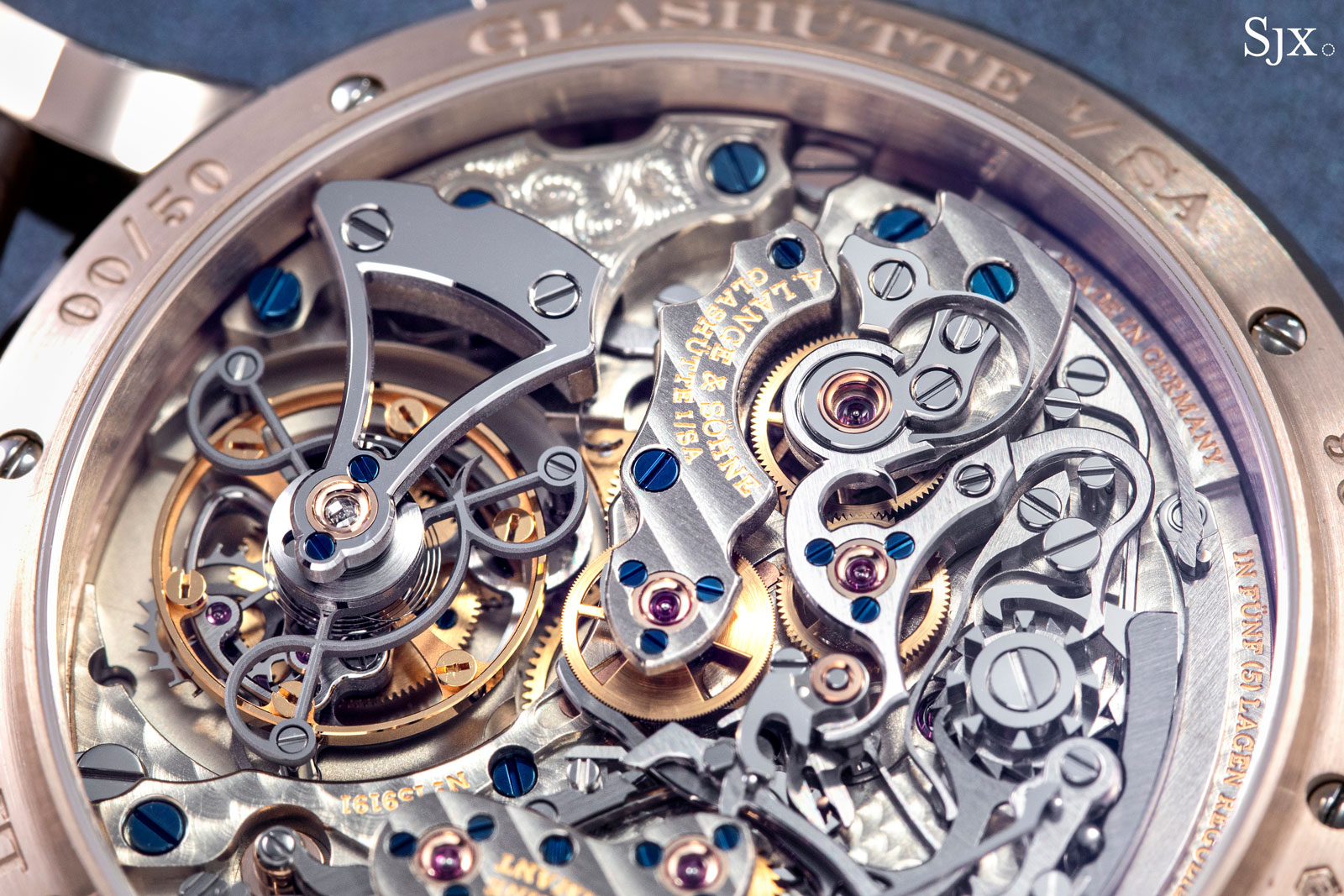
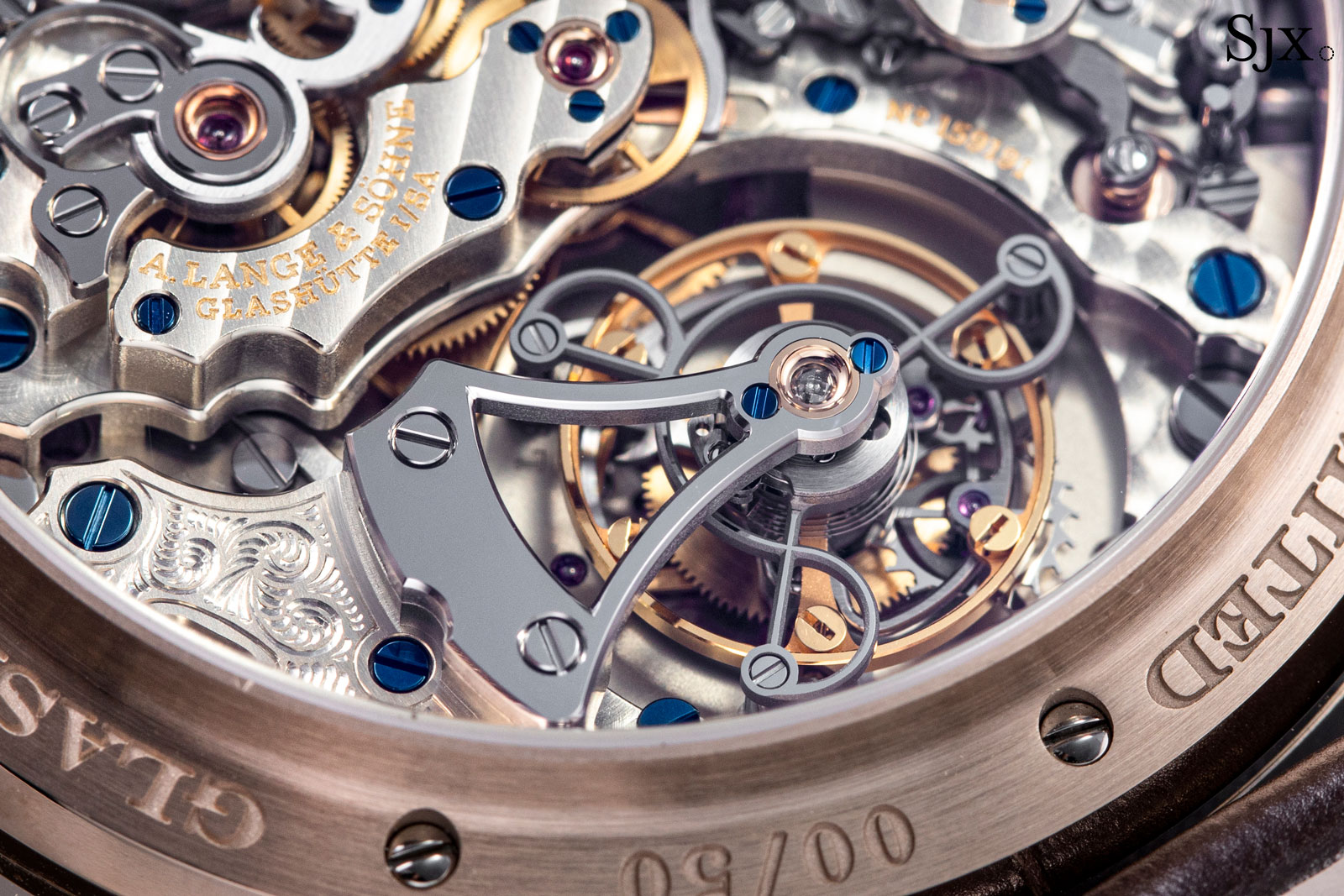
Due to space constraints, the tourbillon is secured by a V-shaped cock instead of the linear bridge found in most other Lange tourbillons
But it is no ordinary one-minute tourbillon, but Lange’s patented hacking tourbillon. Concealed under the base of the tourbillon bridge is the moustache-shaped spring that touches the rim of the balance wheel at two points when the crown is pulled to set the time. This stops the balance, which in turn halts the rest of the movement, allowing for more precise setting of the time.
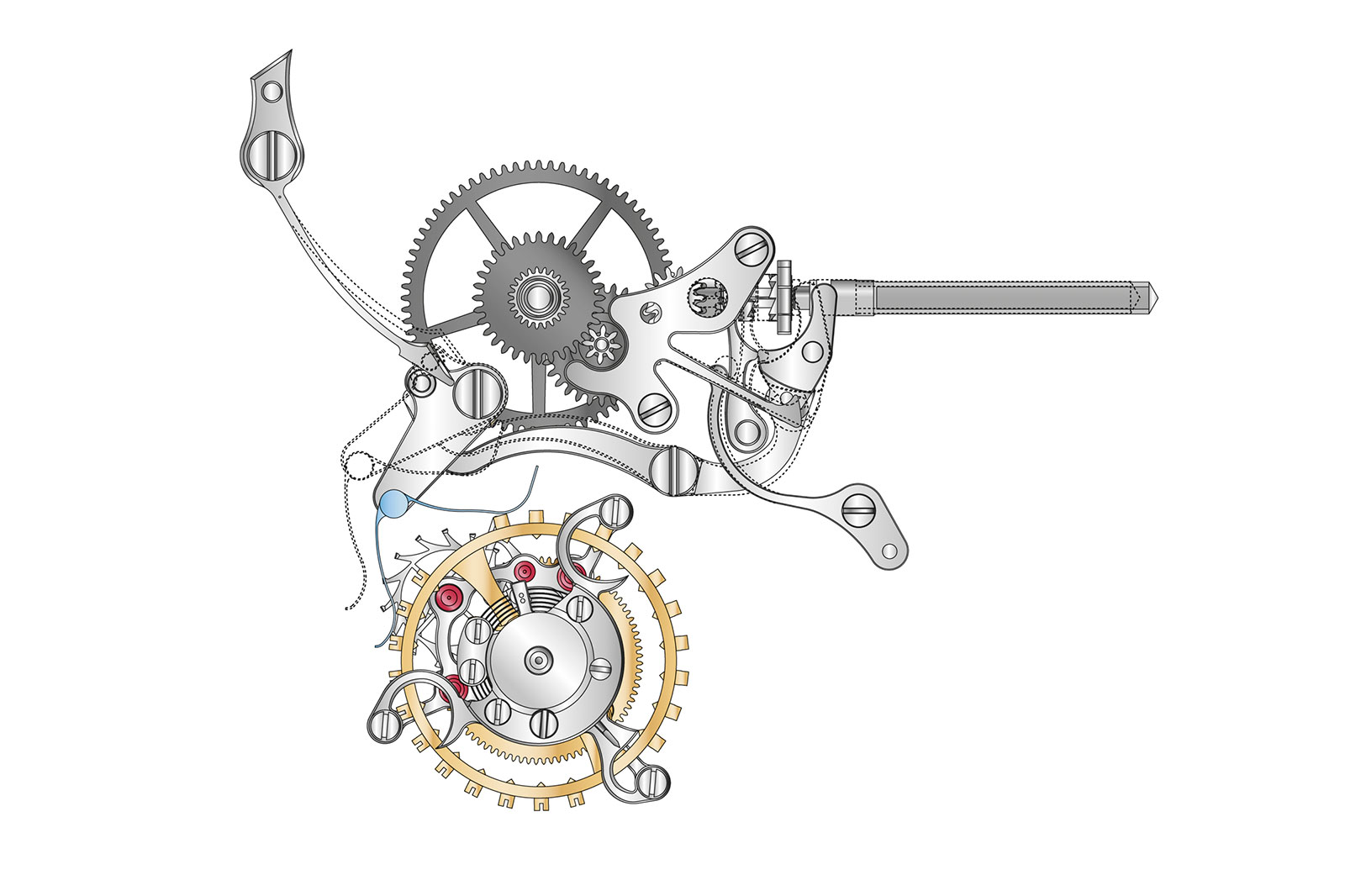
The patented mechanism for stopping the tourbillon. Diagram – A. Lange & Söhne
The ingenuity of the hacking mechanism lies not in stopping the tourbillon, but getting it back up to speed when the crown is pushed back in. This has be to done quickly enough so as not to affect the synchronised time setting.
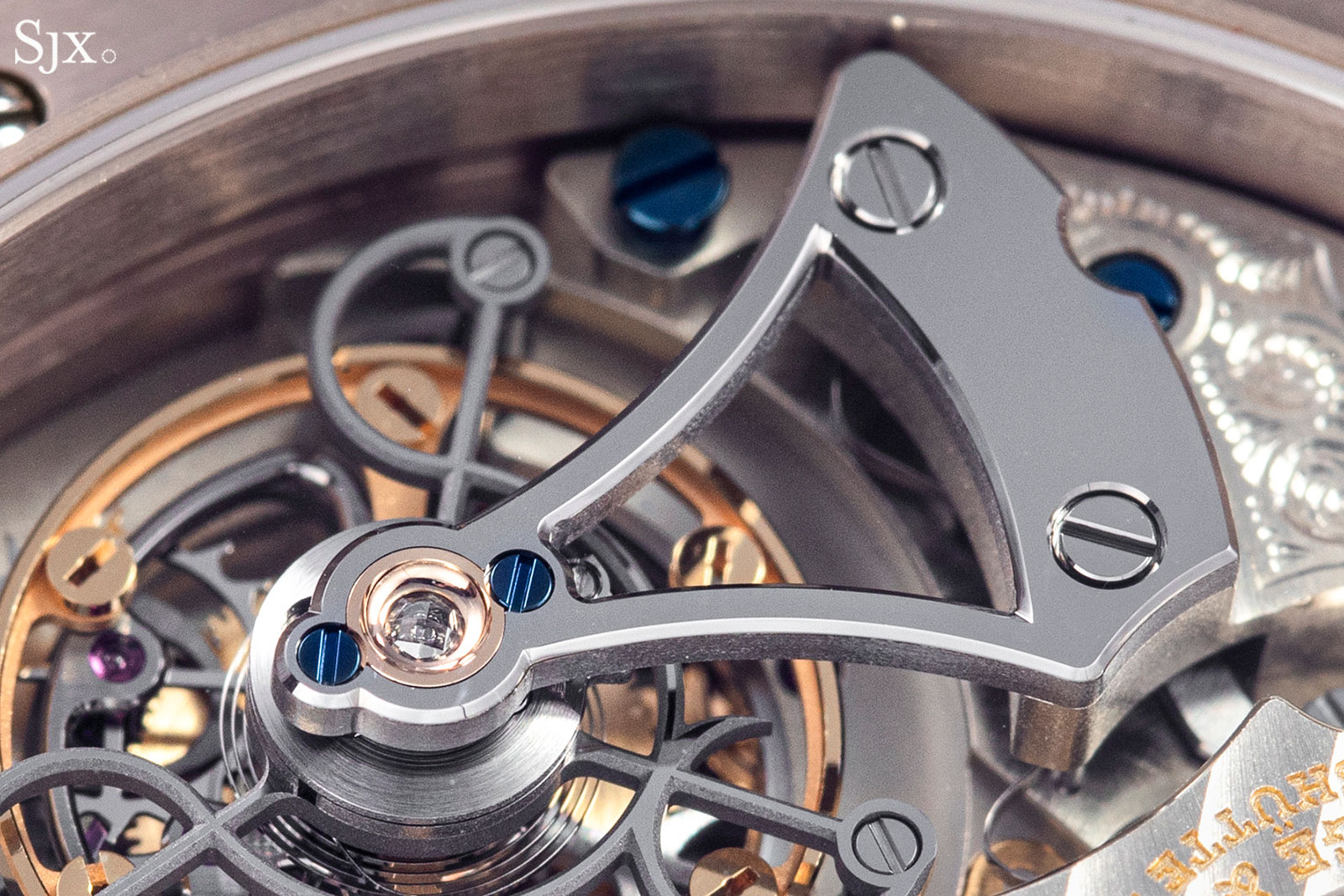
The curved end of the hacking lever is visible just below the base of the tourbillon cock
Needless to say, the decoration of the movement is exemplary. It is done in the usual Lange style, and incorporates the various flourishes typical of the brand, like the diamond endstone for the tourbillon, a detail taken from historical Lange tourbillon pocket watches.
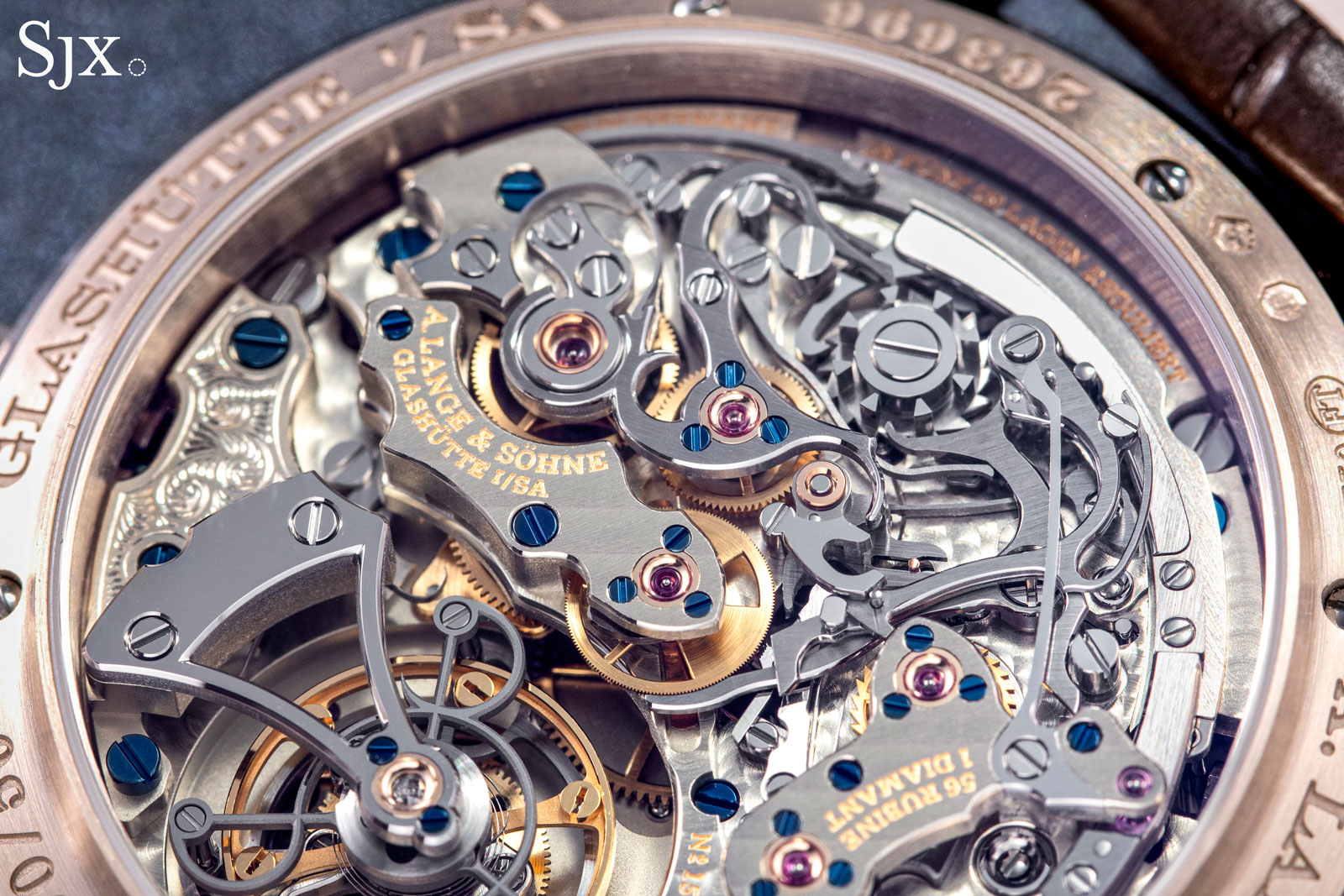
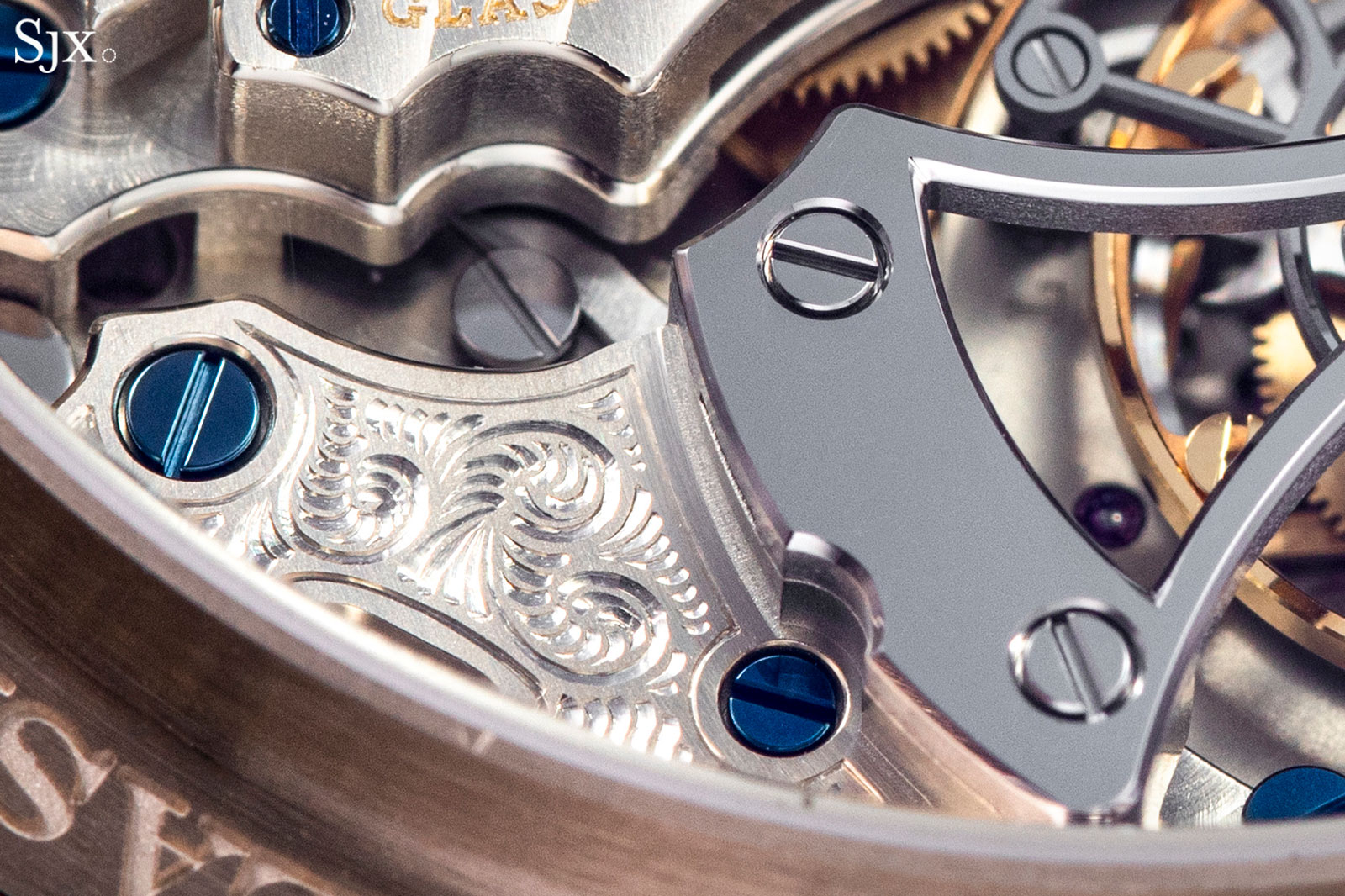
The hand-engraved base for the tourbillon cock

The tourbillon cock is black polished on the top, polished along the bevels, and straight grained on its flanks
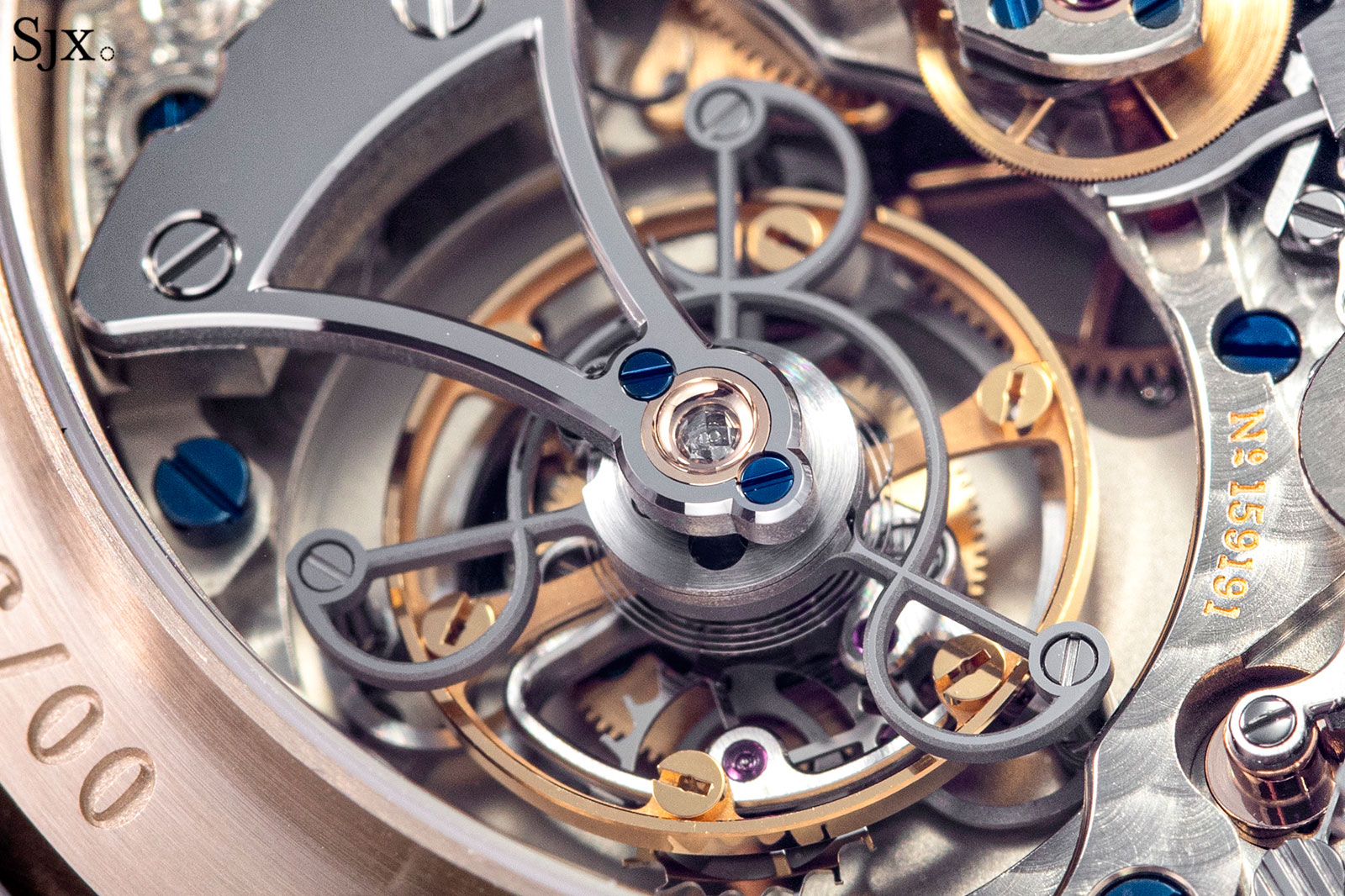
The decorative diamond endstone in a gold charon secured by blued screws
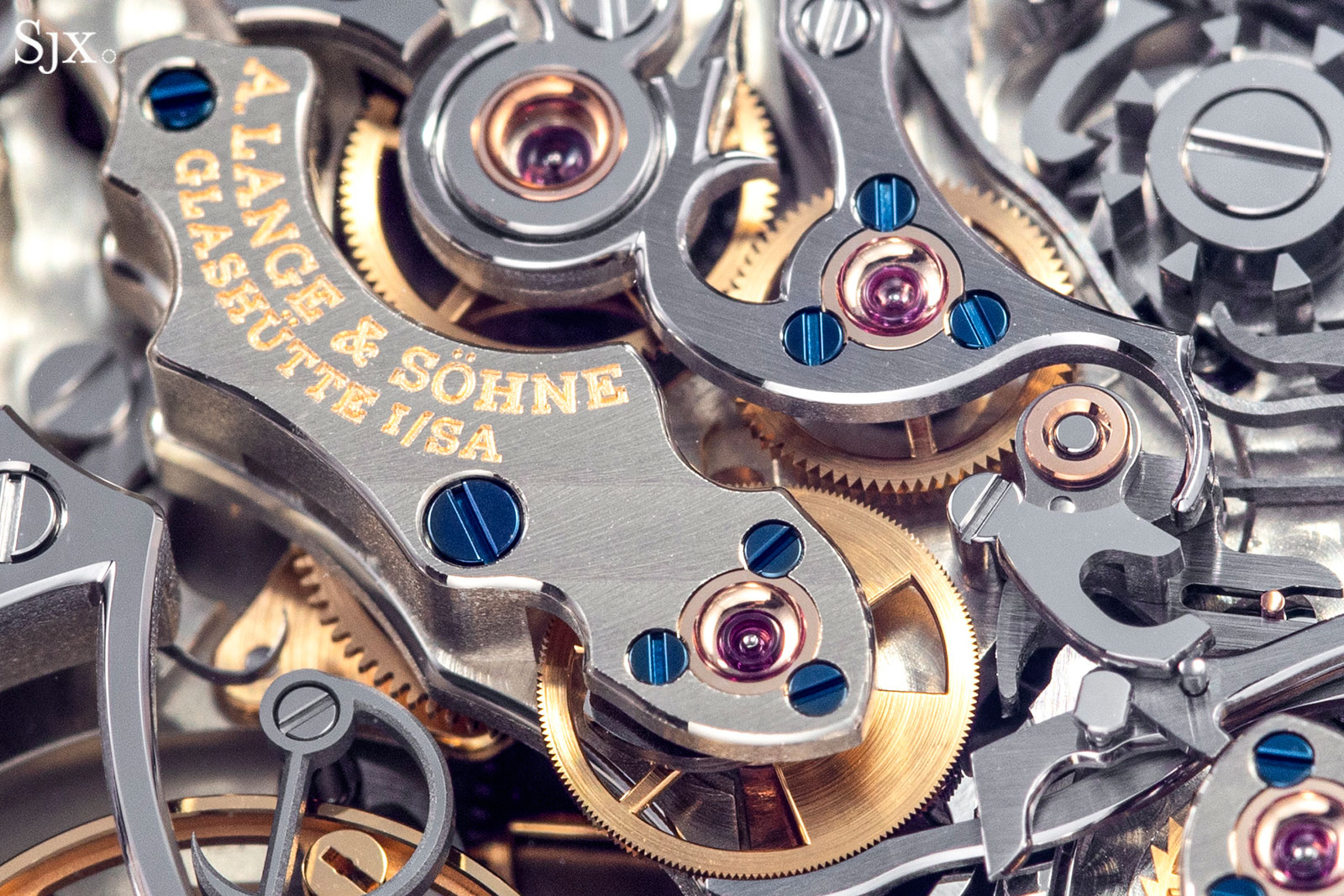
The steel levers of the chronograph works are a treat
Concluding thoughts
The Datograph Perpetual Tourbillon Honeygold “Lumen” is classic Lange in that it achieves near perfection in everything it sets out to do. At the same time, it arguably embodies the brand by combining many of its signature complications and features. What it lacks in imagination and novelty, the Datograph Perpetual Tourbillon Honeygold “Lumen” makes up for in impressive, tangible quality.
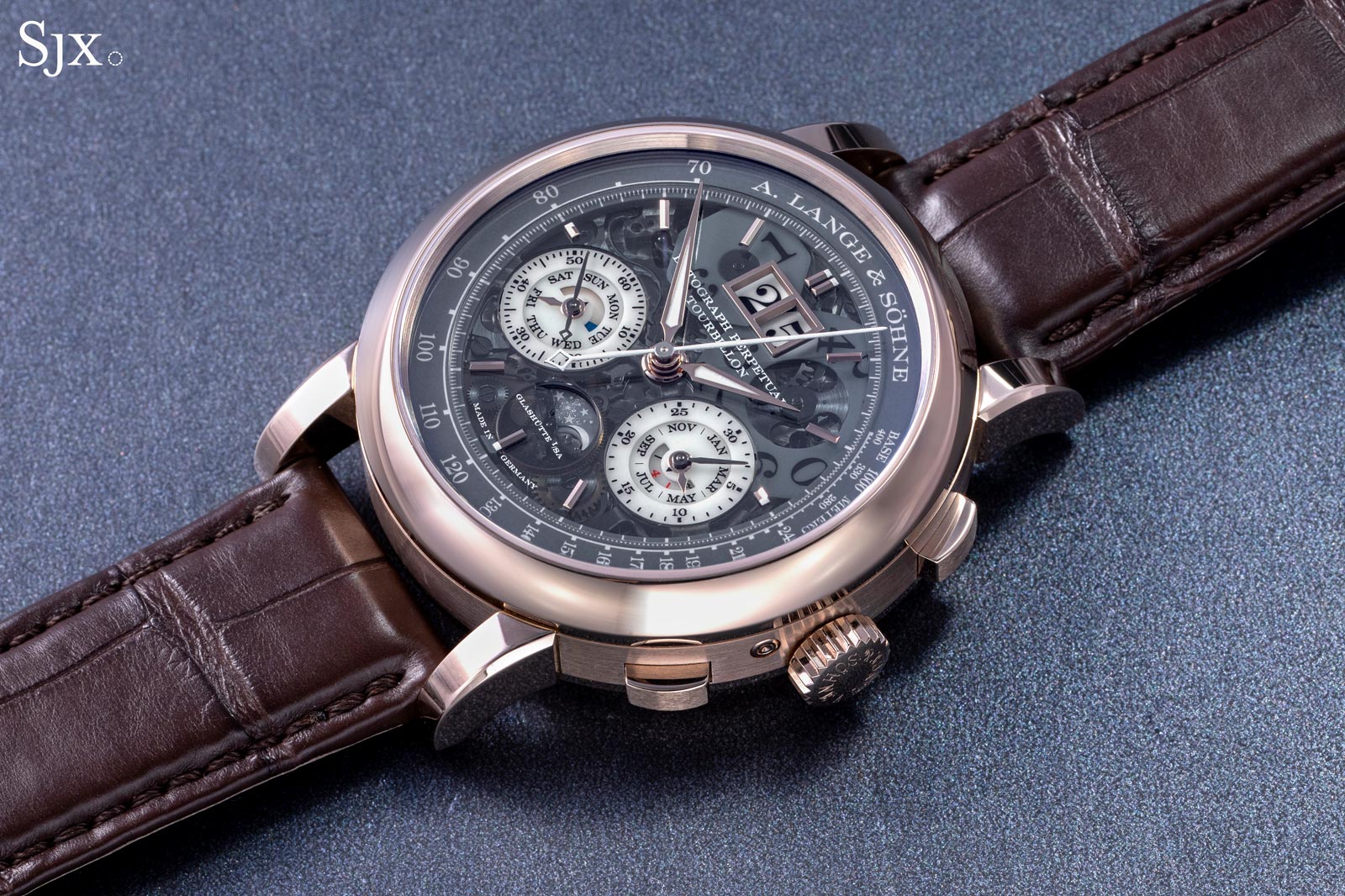
Key facts and price
A. Lange & Söhne Datograph Perpetual Tourbillon Honeygold “Lumen”
Ref. 740.055FE
Diameter: 41.5 mm
Height: 14.6 mm
Crystal: Sapphire
Material: 18k Honeygold
Water resistance: 30 m
Movement: L952.4
Features: Hours, minutes, seconds, perpetual calendar with moon phase and oversized date, flyback chronograph, and one-minute tourbillon
Winding: Hand-wound
Frequency: 18,000 beats per hour (2.5 Hz)
Power reserve: 50 hours
Strap: Alligator with folding buckle in 18k Honeygold
Limited edition: 50 watches
Availability: Only at A. Lange & Söhne boutiques
Price: US$620,000 before taxes
For more, visit Alange-soehne.com.
Addition August 2, 2024: Diagram of hacking mechanism.
Back to top.
